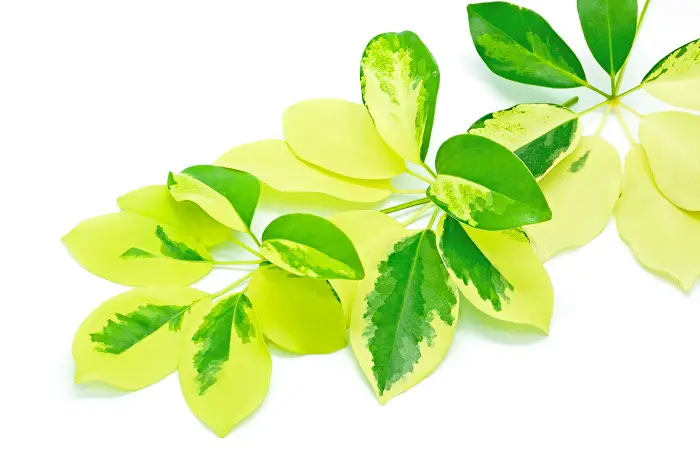
We say there is love is sharing. So it is only expected that we share everything we have with our furry babies whom we love so much, including our food right? Well, research tells us that things could get pretty awry if you decide to share your food with your pet. In fact, we have about 197 foods dogs can’t eat which we are going to look at today.
We’ve enlisted the help of top authorities in the pet care industries to compile this exhaustive list of everything you should never feed your dog. Some of these items on our list have been known to cause mild maladies in dogs, others are dangerous to the point of being fatalistic.
Although we promise to give you only verified facts in this article, we must remind you that this shouldn’t take the place of a vet consultation. So, while we will also give you tips on how to manage the situation when Fido consumes something toxic, your vet is still the number one person to reach out to should that happen.
So, without further ado, let’s begin with…
Human Foods Dogs Can’t Eat
1. Almonds
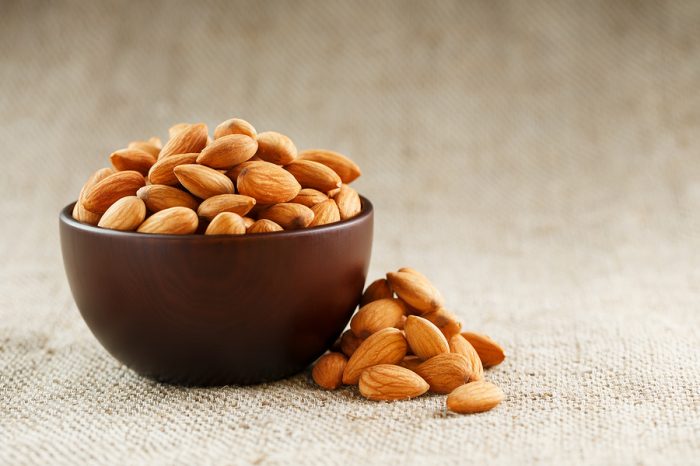
Okay, first, almonds are not necessarily toxic but they can constitute serious intestinal distress for your dog.
For one, almond is a type of nut, and so it is quite high in fats which could put your pooch at the risk of pancreatitis – a serious health condition in dogs (source).
Besides that, almonds can constitute a choking hazard especially for small breeds. Almonds could cause a form of obstruction in the intestines, esophagus, and windpipe. In fact, in some cases, such obstructions would require surgery else it could end up fatalistic.
Now, generally, you shouldn’t be worried if your dog swallows one or two almonds. However, you might want to watch him closely for any signs of obstruction or intestinal distress (source).
2. Flavored Almonds

Okay, flavored almonds present somewhat unique risks when compared to unflavored almonds. First off, flavorings and spices can cause irritations in your dog’s gut. Also, the salt contained in the seasoning can cause an unhealthy retention of water. Plus, it can also lead to salt toxicity if your dog consumes too many flavored almonds (source).
3. Chocolate

We’re sure you’ve heard it before – chocolate is bad for dogs. But why can’t dogs eat chocolate?
First, chocolate contains caffeine and theobromine which can cause an elevation in your dog’s heart rate and overstimulate their nervous system as well (source).
Now, with chocolate toxicity, the risks are usually dependent on the quantity of chocolate consumed and the type of chocolate as well. This is because concentration of these toxic substances vary from one chocolate type to another.
Some of the symptoms of chocolate poisoning include diarrhea, vomiting, restlessness, tremors, abnormal heart rate, restlessness, and seizures (source).
In fact, with seniors and dogs with cardiovascular conditions, chocolate poisoning may very well lead to sudden death (source).
4. Cinnamon
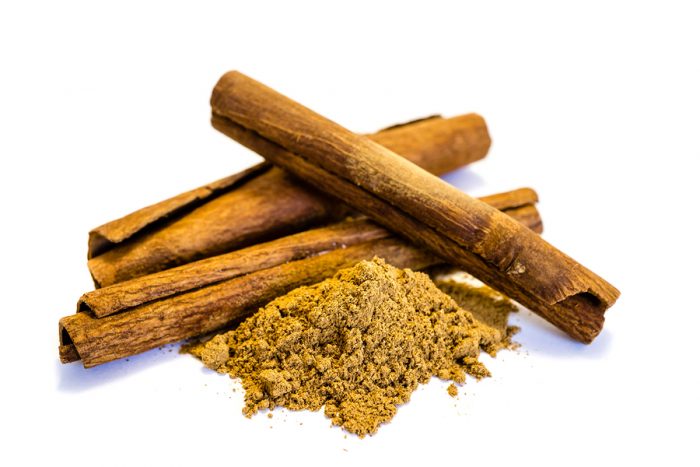
Cinnamon is not exactly toxic for dogs, just like almond. Nonetheless, this does not give you the go-ahead to splurge on cinnamon whether by sprinkling on his kibble or otherwise.
Experts warn pet owners that cinnamon can cause irritation in the stomach and skin irritation. And it’s not just for dogs, it’s for humans too.
According to authorities, anything over a teaspoon of cinnamon powder can cause problems in pets while even lower dosages of cinnamon oils are enough to do the damage.
An overdose of cinnamon can lead to diarrhea, vomiting, reduced blood sugar, liver disease, and a change in the heart rate – all of which are bad news.
As expected, it’s worse for small breeds than it is for large breeds as overdosing requires a much lower dose than it would take for a large breed (source).
5. Corn On the Cob
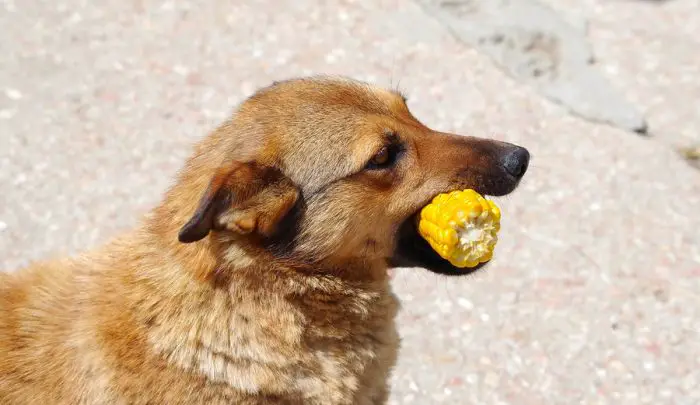
While corn is not exactly bad for your dog, corn on the cob is potentially dangerous for your pup. This is because of the choking risk that corn on a cob poses for your dog. If your dog should mistakenly swallow the cob, it could cause a blockage of the intestine. This is why dogs must not be allowed to gnaw on a corn cob because if he is hungry enough, he could whittle down the whole cob (source).
6. Flavored Popcorn
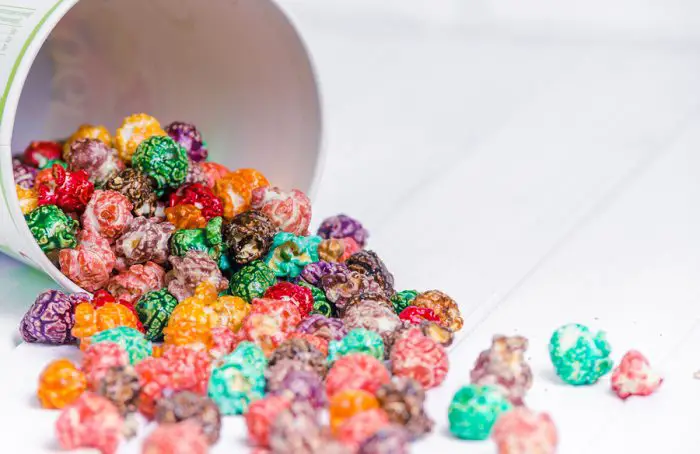
A few pieces of popcorn might not be so bad as long as it is neither salted nor buttered. Popcorn should be air-popped, plain, light, and as close to natural as possible to qualify as a treat for your dog.
In fact, unflavored popcorn is fiber-packed and a good source of energy for your dog.
Just ensure that there are no unpopped kennels in the batch you give him so they don’t cause stomach upset.
When popcorn is packed full of butter, salt, and other kinds of flavors, on the other hand, it automatically becomes unhealthy for your dog (source). So, ensure you keep them far away from him.
7. Garlic

Garlic contains thiosulfate – a substance that’s safe for humans but toxic to dogs (source).
Thiosulfate is known to bring about an oxidative damage of red blood cells which can result in hemolytic anemia. This condition is usually symptomized by rapid breathing, paleness of the mucus membranes, weakness, dark-colored urine, jaundice, and lethargy.
In addition, garlic toxicity is also known to cause depression, abdominal pain, dehydration, loss of appetite among others.
In truth, an accidental ingestion of a little garlic might not be enough to make you panic. However, to intentionally feed your dog with garlic can cause disaster for your pet (source).
8. Garlic Bread

With garlic bread, it’s not just the garlic, it’s the unhealthy amounts of oil, butter, herbs, and cheese that can cause stomach upset in dogs. Garlic bread really has no nutritional value for pets and, instead, supplies the body with fat and calories that are really unnecessary for them (source).
Thankfully, garlic poisoning is not fatalistic for dogs. Nonetheless, your dog would need supportive care after garlic poisoning for him to stay a little comfortable (source).
9. Ice Cream
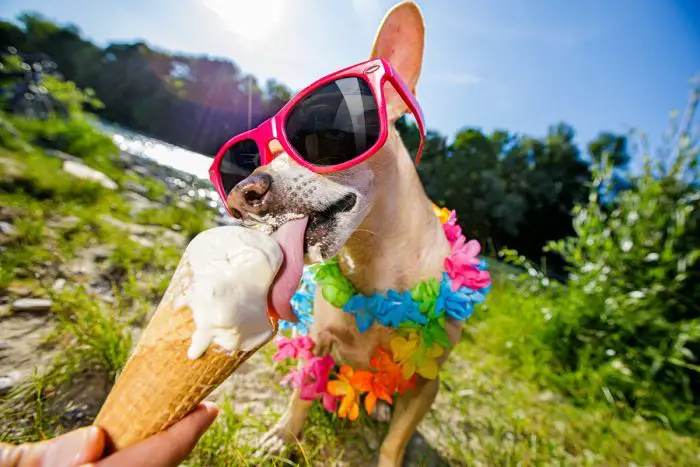
The first problem with ice cream is that, after weaning, dog’s bodies don’t develop to be able to digest milk (source). As you know, ice cream contains milk. When consumed, the presence of milk could lead to bloating up, gas, vomiting, or diarrhea.
Besides that, ice cream is full of sugar which could easily lead to obesity in dogs as well other health issues. But even at that, even sugarless ice cream could constitute a problem if it contains sweeteners like xylitol.
Generally, small amounts of ice cream do not constitute a big nuisance. However, if your dog is currently struggling with diabetes, obesity, dairy intolerance, or allergies, even little amounts of ice cream could cause serious problems for him (source).
10. Macadamia Nuts
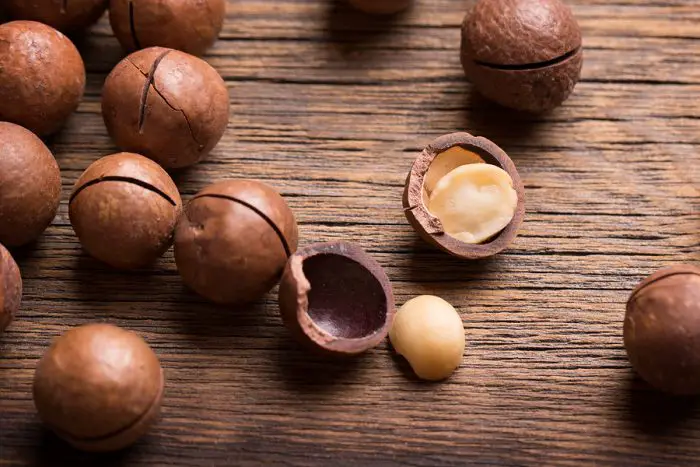
Macadamia nuts are a huge no-no for dogs. You should never feed your dog Macadamia nuts as they cause severe consequences such as depression, ataxia, hyperthermia, vomiting, and weakness.
Now, macadamia nuts are particularly interesting as they aren’t known to cause such consequences in humans or even cats. Researchers who have looked into the matter still have nothing to report as regards why these nuts are toxic to dogs.
In fact, it is so bad that even as little as a tenth of an ounce of macadamia nuts per 2 pounds of your dog’s body weight is enough to do damage (source). So, don’t even give your dog just a little taste.
You want to be careful as macadamia nuts are found in everyday foods such as baked goods like muffins, cakes, cookies, and trail mixes.
Sometimes, symptoms of macadamia nuts are only mild and resolve themselves in a few days. However, there are times where it gets more serious and dogs might even lose some function of their limbs.
Consult a vet immediately you suspect your dog might have ingested macadamia nuts (source).
11. Onions
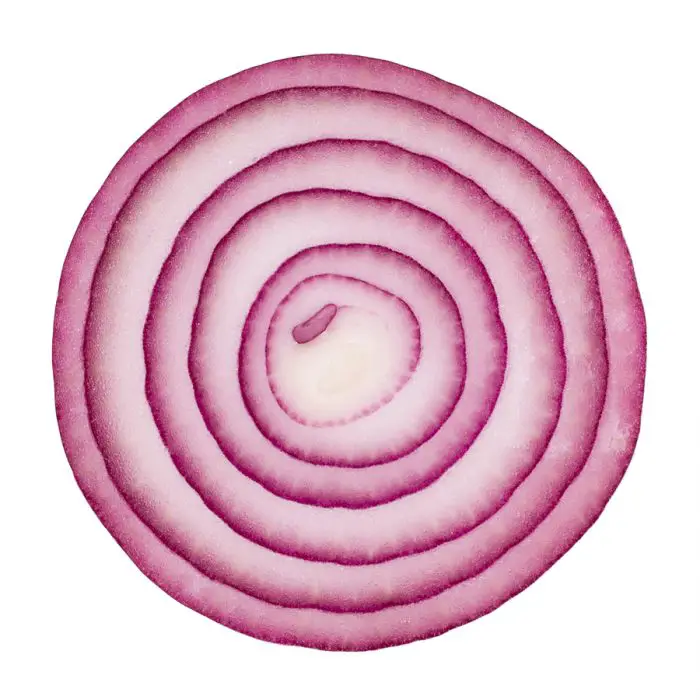
Never feed your dog onions. They contain N-propyl disulfide which is quite toxic to dogs and can damage their red blood cells (source).
In turn, this affects the transportation of oxygen round the body which leads to anemia. And, if severe, anemia might even demand that your dog gets a blood transfusion.
Please, note that all parts and all forms of onions are dangerous to dogs. From the leaves to the juice, to the processed powders, onions are toxic to dogs. So, be careful about that (source).
12. Nutmeg
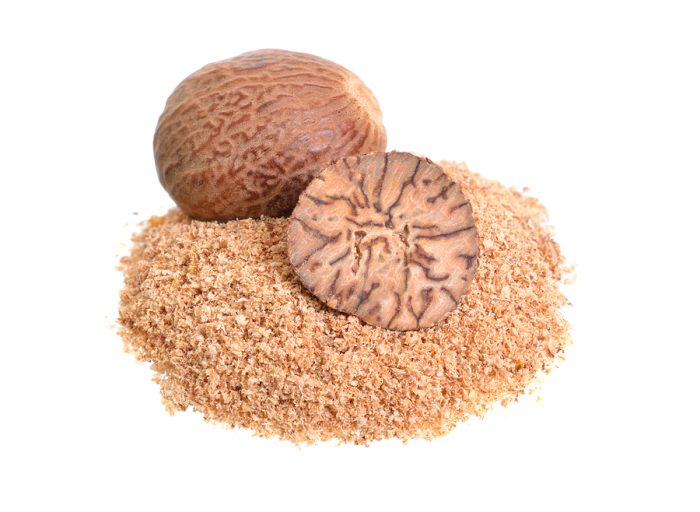
Nutmeg contains a substance known as myristicin which is known to be toxic to dogs especially when consumed in large amounts (source).
Some of the symptoms that follow an overdose of nutmeg in dogs include an increased heart rate, dry mouth, high blood pressure, stomach upsets, as well as seizures.
You want to ensure that you keep nutmeg out of the reach of your dog. Plus, also avoid giving him baked goods or any other kind of food that contains nutmeg (source).
13. Raw Yeast Dough

Here’s why it is unsafe for dogs to consume raw yeast dough. Yeast ferments, and when it does, it produces alcohol. This, therefore, can lead to alcohol poisoning and even death if your dog consumes it (source).
Besides that, consuming raw yeast dough could lead to bloating in dogs. This is as a result of the dough rising or expanding in their stomach. This could eventually lead to weakness and a difficulty in breathing (source).
14. Artificial Sweetener (Xylitol)
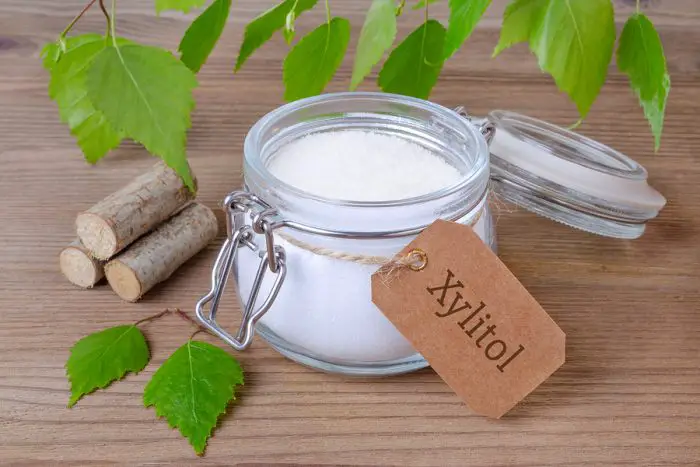
It’s cool to go on a sugar-free spree as humans. As a replacement for sugar, oftentimes, manufacturers use an artificial sweetener known as xylitol which causes a release of insulin in the body.
For dogs, consuming xylitol is really dangerous as it could lead to hypoglycemia. This is, in turn, linked to liver failure as well as blood clotting disorders.
Xylitol is found in candy, toothpaste, gum, some diet foods, as well as baked goods. So, make sure your dog does not get his paws on any of these items (source).
15. Salt and Salty Snacks or Foods

Salt isn’t completely unsafe for dogs. However, when consumed in large quantities, excessive salt consumption can lead to excessive thirst as well as frequent urination. In some dogs, excessive salt consumption can also cause sodium ion poisoning (source).
How to know your dog might have consumed too much salt? Symptoms usually range from vomiting to depression to diarrhea, increased body temperature, tremors, as well as death.
Therefore, for your dog’s sake, avoid feeding him salty snacks such as pretzels, potato chips, or salted popcorn.
16. Walnuts
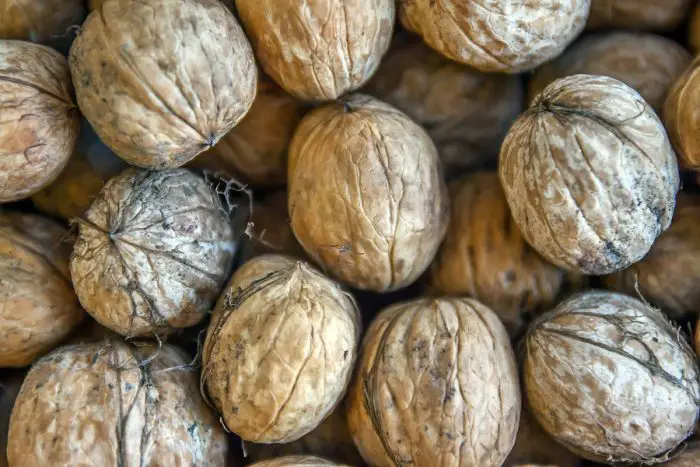
Just like macadamia nuts, walnuts are dangerous for dogs (source).
17. Pecans
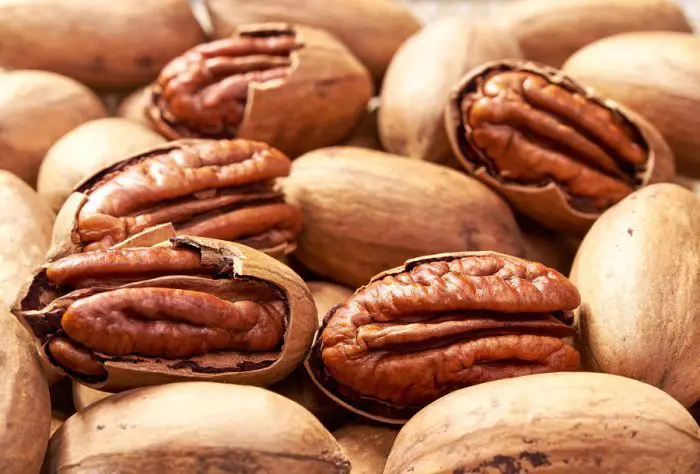
In large amounts, pecans can become toxic to dogs as they contain a toxic compound known as juglone. Although juglone is more toxic for dogs, it still presents mild symptoms for dogs. When consumed in large amounts, pecan can lead to a mild stomach upset as well as an obstruction of the gut (source).
18. Sugar

Just like in humans, sugar can cause your dog to gain unnecessary weight which could eventually lead to obesity and diabetes. Also, sugary foods can easily cause tooth decay and other related conditions in your dog (source).
19. Fried and Fatty Foods

The problem with fatty foods is their propensity to cause pancreatitis in dogs. Generally, a small helping of fatty foods might not cause a lot of damage. However, if fed these on a consistent basis, pancreatitis could follow which can easily become life-threatening for your dog (source).
20. Cooked Bones
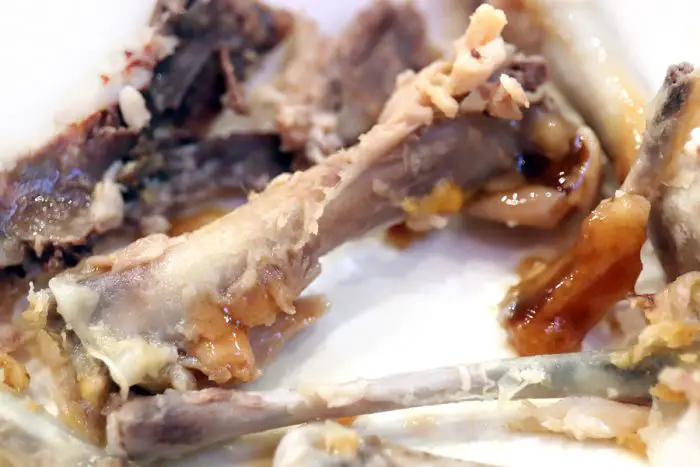
This seems like a very natural thing to do. However, cooked bones are unbelievably dangerous for dogs. This is because when bones are cooked, they become more brittle. This leads them to splinter easily into sharp shards. When these pass through a dog’s digestive system, they can cause some damage, either by blocking the gut or by cutting it (source).
21. Guacamole

As you know, guacamole is made mostly from avocados which contains poison that is dangerous for dogs (source).
Besides that, guacamole also contains other toxic foods like garlic and onions which are known to cause gastrointestinal upsets as well as anemia. So, please do not feed your dog guacamole.
22. Snack Mix
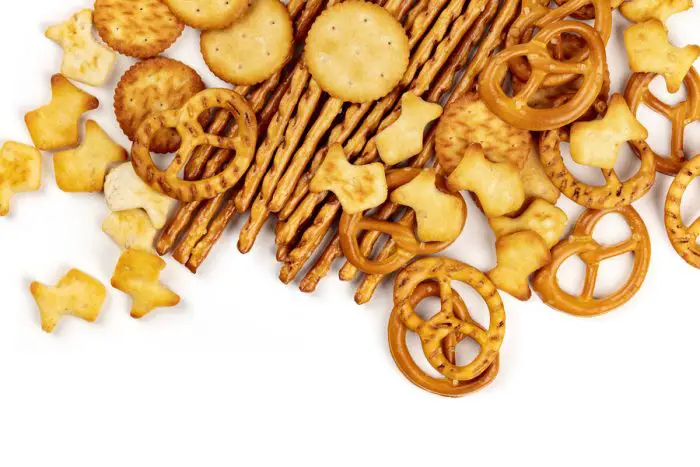
For humans, snack mix can be a wonderful treat. So, it’s not so far-fetched to want to give your dog a handful or two of this treat. Problem is that, oftentimes, this snack mix contains garlic and onion powder and we’ve already established these to be highly problematic for dogs.
Also, snack mix is high in sodium and is quite salty. This could lead to sodium poisoning in dogs as well as excessive thirst and frequent urination (source).
23. Pasta Sauce

Generally, pasta is good for you as long as it is plain and cooked. And since we are here, please keep in mind that some dogs are allergic to wheat. If your dog is, he shouldn’t be eating pasta as it is made of wheat.
Now, pasta sauce. This contains a number of spices that are generally toxic to dogs including garlic and onions. They are also high in salt and might contain tomatine which is dangerous to dogs (source).
24. Pepperoni

Pepperoni contains unhealthy levels of fat and sodium which are both bad for dogs. Besides, they also contain some unsafe seasonings for dogs.
Regular consumption of pepperoni, therefore, can lead to problems with digestion, kidney damage, pancreatitis, or salt poisoning.
You might want to watch out for symptoms like excessive thirst and urination, abdominal upset, diarrhea, and vomiting if your dog has just consumed more than just a few slices of pepperoni (source).
25. Pistachios
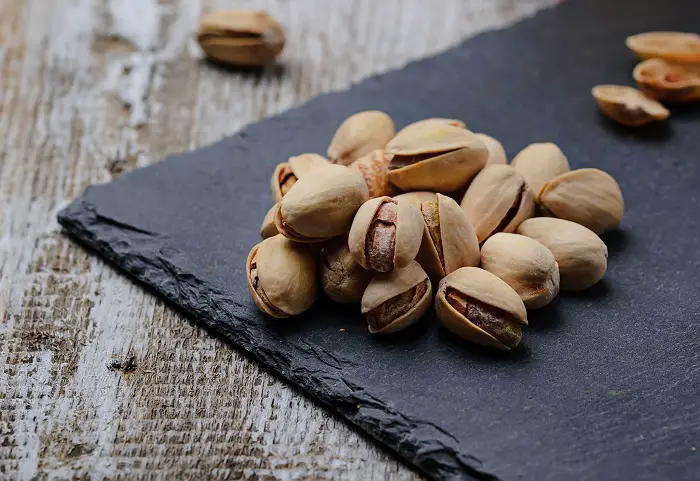
We’d say to be careful with these because they are high in fat as most nuts are. Remember to deshell first before serving. Also, be extra careful with smaller breeds as they could cause digestive issues or constitute a choking hazard (source).
26. Cashews
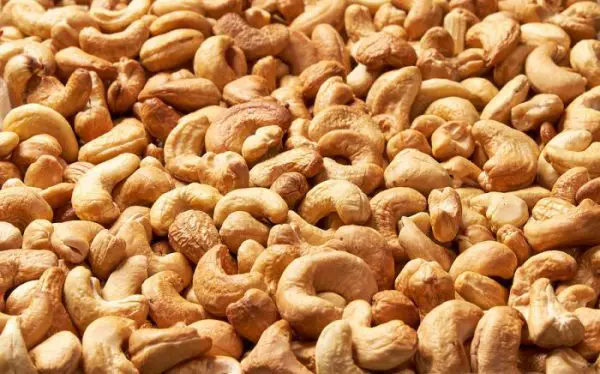
Because, most times, cashews are salted, it is a food to be wary of. It’s best to limit feeding your dog cashew to occasionally and only in small quantities at a time.
Plus, it cashews are high in fat and, if fed to your dog on a regular basis, it could lead to obesity as well as pancreatitis (source).
27. Baby Food

Sometimes, even your vet might recommend that you feed your pooch baby food. Especially if said puppy is sick. Nonetheless, if you’re going to feed your dog baby food, please check first to see if the food contains onion powder. We already know that is toxic or dogs (source).
But besides that, putting your dog on a baby food diet is a bad idea as it will, eventually, lead to nutritional deficiencies in the dog. So, for healthy hounds, there’s no need to feed baby food. Feed puppy food instead (source).
Foods Dogs Can’t Eat — Fruits and Vegetables
1. Avocados
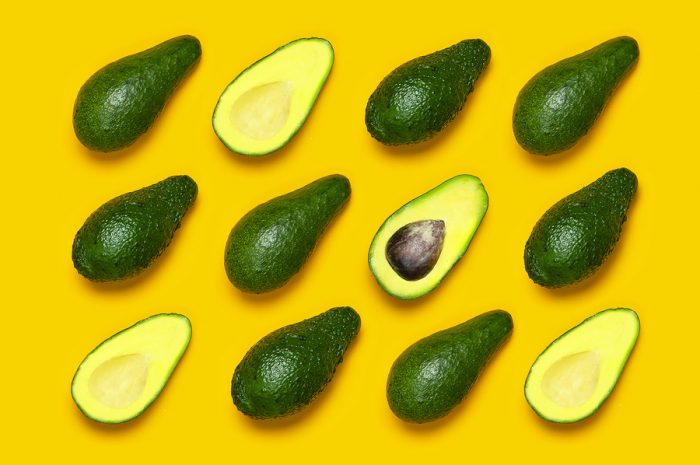
Although a trendy healthy food alternative for humans, avocados are dangerous for dogs. This is because they contain persin.
Persin is a fungicidal toxin which is known to cause severe health issues in dogs. Sometimes even, persin can cause death in dogs and other animals.
Now, the exact lethal dose of persin is yet unknown. However, we do know that when consumed in large amounts, persin can cause diarrhea and vomiting. It could also cause myocardial damage, and because it is high in fat, can also lead to pancreatitis.
Even though the fleshy part of avocado contains only little persin, compared to the skin, pit, and leaves, the level of persin in avocado is still a little too much for dogs. So, avoid giving your dog avocado at all (source).
2. Cherries

Why are cherries so dangerous? Well, in their stems, pits, and leaves is cyanide which is lethal if your dog consumes a high enough quantity (source).
Cyanide has the ability to disrupt the transportation of oxygen around cells which means that blood cells don’t get adequate oxygen.
Besides that, the pits can easily cause intestinal blockage if they get lodged in the gut.
One cherry fruit might not be enough to panic. However, if you suspect that your dog has had some cherries, there are symptoms to look out for. Please look out for breathing difficulties, redness of the gums, as well as dilation of the pupils as these are all indicative of food poisoning (source).
3. Grapes and Raisins

Your dog should never eat grapes or their dried siblings – raisins. Although researchers have yet to pinpoint the exact toxic substance contained in these fruits that lead to negative reactions in dogs, they are still known to be super toxic to dogs.
There’s no data either on what quantity of grapes or raisins are poisonous for dogs. Sadly, grape and raisin toxicity is actually fatalistic for dogs. It could lead to acute renal failure in dogs which can easily lead to death (source).
So, you should never feed your dog grapes or raisins, even seedless grapes and peeled grapes should be avoided.
If you suspect that your dog has consumed some grapes or raisins, you must contact a vet immediately or call the Animal Poison Control Center (source).
4. Tomatoes
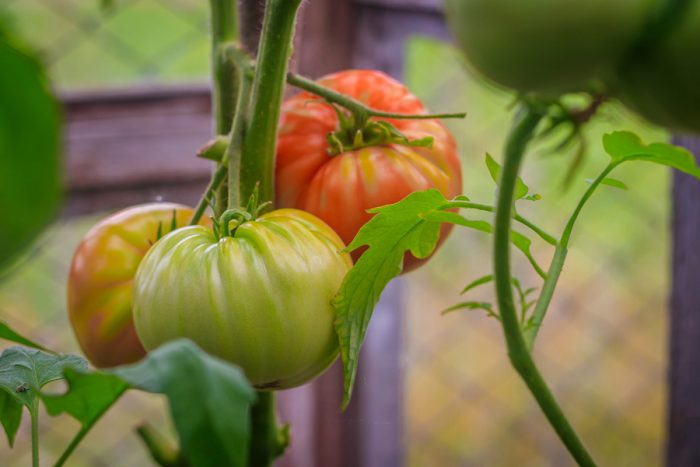
Generally, tomatoes are safe for dogs, but they do come with certain levels of risks. For instance, the green parts of tomatoes contain a toxic substance known as solanine which is harmful to dogs when consumed in high quantities (source).
5. Asparagus

Well, asparagus isn’t exactly unsafe for dogs. But, at the same time, it is pointless feeding your dog asparagus and here are a few reasons why.
Firstly, raw, asparagus is way too tough for dogs to chew and digest. So, some dogs might experience gas, diarrhea, and vomiting after eating raw asparagus (source).
Also, sometimes, in a bid to make asparagus easier for dogs to chew and digest, you could overcook, at which point, all the nutrients are already lost (source).
So, raw or cooked, asparagus is mostly useless for dogs and they can do quite well without it.
6. Apricots
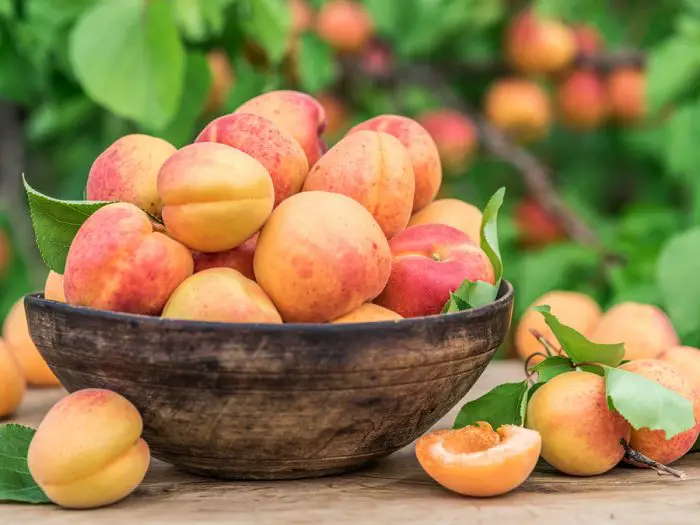
Just like cherries, all parts of apricots besides the flesh, contain cyanide which is lethal to dogs (source).
7. Plums
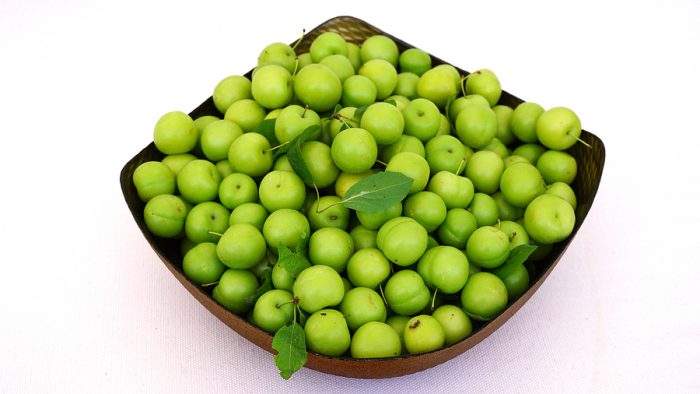
Dog owners are generally advised to not feed their dogs plums mostly because of the pit. Plums come with pits that can be a little sharp which could cause damage to the gastrointestinal tract. It’s especially risky for smaller breeds.
Besides, if the pits of plums are crushed, it could lead to a release of cyanide which we have established to be dangerous for dogs.
As for the fleshy part of plums, that is not considered to be unsafe for dogs and can be safely given to dogs. Be careful to avoid consumption of large amounts of the flesh though as they are quite high in sugar which isn’t good for dogs (source).
8. Mushroom
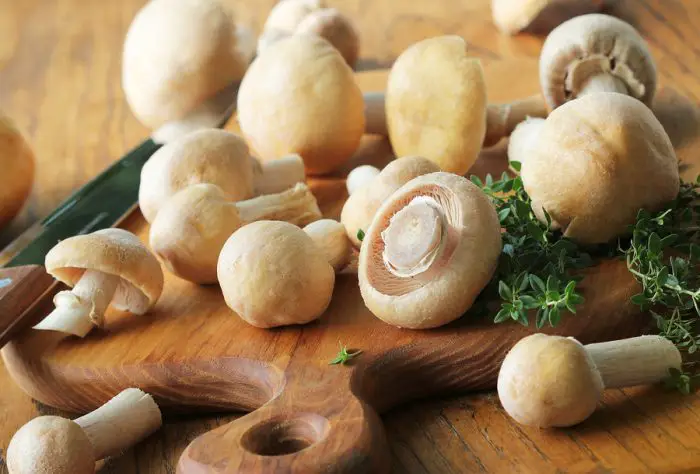
Wild mushrooms are highly toxic for dogs and as such you should avoid allowing your dogs eat mushrooms while on a trail. Even if you think you’re sure the mushroom is not toxic, the truth is that, sometimes, these mushrooms are hard to tell apart.
Also, contrary to what people think, dogs can’t actually tell toxic mushrooms apart by scent (source).
So, better than safe than sorry. Keep your dogs away from mushrooms.
9. Grapefruit
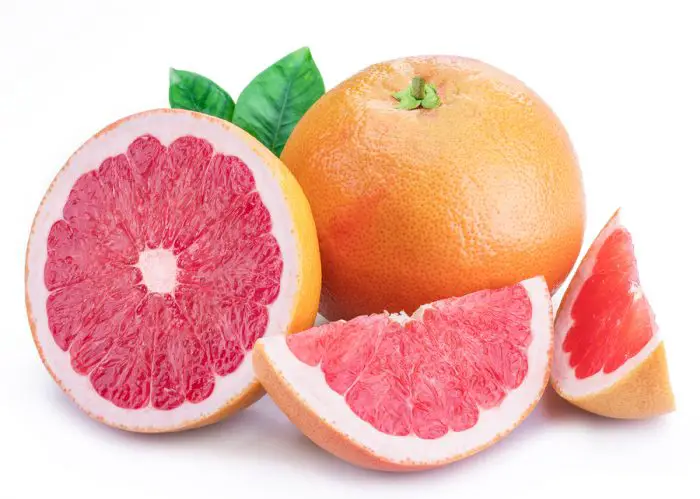
Grapefruit is toxic to dogs because it contains psoralens and essential oils that can do your dog some damage. Some symptoms of this damage include vomiting, diarrhea, as well as other issues (source).
10. Lemons and Limes
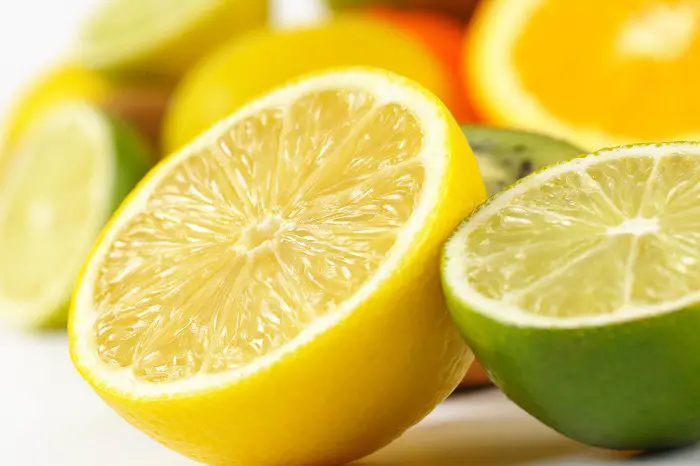
Well, while lemons and limes are not toxic, they are quite acidic. In the first place, they don’t even taste pleasant to dogs. Secondly, in some dogs, the acidity of the fruits can lead to vomiting, diarrhea, stomach upsets, and weakness.
Also, if your dog consumes a large piece of lemon peel, it could go ahead to block his intestine, and, of course, that’s something we don’t want.
Besides, there are no real, appreciable health benefits of feeding dogs with lemons (source). So, why bother?
11. Raw Potatoes

During growth or storage (after harvesting), the green sprouts and skins of potatoes tend to develop solanum alkaloids after being exposed to sunlight for a while. While this is quite dangerous, solanine poisoning in dogs is quite rare due to a few reasons.
One reason is that solanine is poorly absorbed in dogs, and most times, gets hydrolyzed to solanidinel which is not as toxic as solanine. Solanidinel is then quickly eliminated (source).
Nonetheless, though rare, they have still been reports of solanine poisoning in dogs, so err on the side of caution and only feed your dog cooked or mashed potatoes (source).
Foods Dogs Can’t Eat — Drinks
1. Milk

Well, milk is not a totally bad idea. However, the problem exists when the dog in question is lactose intolerant, and many dogs are actually lactose intolerant, especially puppies. In fact, in most dogs, after weaning, the dog loses the ability to digest milk. So, you want to be careful.
Occasionally, you can give your dog a few tablespoons of milk as a treat. However, this shouldn’t be a regular thing as milk contains a good concentration of fat and natural sugars which are bad for dogs. This is because it has the potency to cause obesity and pancreatitis in dogs (source).
2. Alcohol

While some people think it is funny to see their dog inebriated, there’s actually nothing to laugh about when it comes to alcohol consumption in dogs. Alcohol is poisonous to dogs.
When consumed, alcohol can lead to vomiting and diarrhea, a decrease in coordinating ability, depression, difficulty in breathing, an increase in blood acidity, and, in extreme cases, even coma and sometimes death (source).
3. Coffee

Your fresh cuppa is not a good idea for your pup. In fact, it is dangerous for your dog because of its caffeine content. Did you know that there are some dogs that are more sensitive to caffeine than humans are (source)?
Actually, caffeine contains methylxanthine which, although is good for humans, is not as good for dogs. When consumed in large amounts, caffeine can lead to diarrhea, vomiting, a racing heart, hyperactivity, panting, tremors, seizure, increased thirst and urination, or even death (source).
4. Tea

Tea can also contain caffeine sometimes which can be harmful to pets even in small doses. So, in everyone’s best interests, keep your pup away from tea (source).
5. Soda

Soda could also contain caffeine too. Lapping up a small poodle of spilled cola might not be a big deal. However, it’s definitely not a great idea to fill your pup’s bowl with soda as a treat (source).
6. Fruit and Vegetable Juice

While many fruits and veggies are good for dogs, there are some that are not as good. Fruit and vegetable juices to stay away from include juices from grapes, avocados, and raisins (source).
7. Sports Drinks

Many dog owners exercise with their dogs which is a great idea. Nonetheless, while you can recharge with a swig of energy-boosting drinks, this is a dangerous move for your dog.
Sports drinks are usually packed full of electrolytes, extra sodium, as well as vitamins which your dog does not need, generally (source). But then again, veterinarians do recommend sports drinks sometimes to prevent dehydration.
However, generally, the best idea is to consult with your vet first before deciding to give them any form of sports drinks.
8. Coconut Milk and Water

Alright, so experts are divided on this issue. One party says it is safe for dogs, the other says it should only be given in small amounts. The main problem with coconut water as stated is that it has a high concentration of potassium which is bad for dogs (source).
Foods Dogs Can’t Eat — Plants
1. Sago Palm

All the parts of this plant are very poisonous to companion animals, and, of course, you know dogs are companion animals. Especially in the seeds of the plants, there are large doses of toxin which can be lethal to dogs.
In fact, ingestion of just a couple of seeds are enough to cause serious symptoms such as diarrhea, vomiting, seizures, depression, and even liver failure (source).
2. Tulip/Narcissus Bulbs

The bulbs of the tulip contain toxins which have been proven to irritate the gut and cause drooling, a drop in appetite, depression of the central nervous system, cardiac abnormalities and convulsions (source).
3. Azalea/Rhododendron

Grayantoxins are toxins found in this plant which cause symptoms such as drooling, diarrhea, vomiting, weakness, and depression of the central nervous system.
In severe cases, azalea poisoning can even lead to coma or death as a result of cardiovascular collapse (source).
4. Oleander

Just like the sago palm, all parts of oleander are considered toxic, containing cardiac glycosides. These glycosides have the ability to cause an irritation of the gut, hypothermia, abnormal cardiac function, and even death in extreme cases (source).
5. Castor Bean
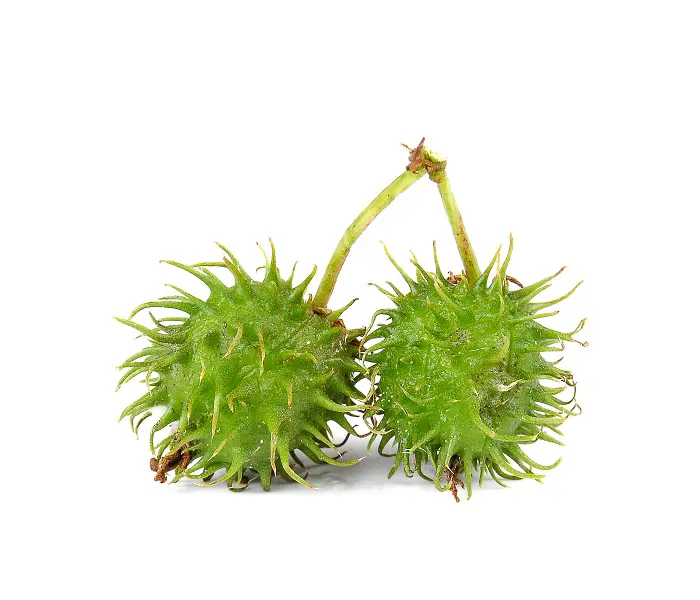
Castor bean contains ricin which is a highly poisonous toxin. When ingested, ricin can cause severe pains in the abdomen, drooling, diarrhea, vomiting, increased thirst, loss of appetite, and weakness.
In severe cases, symptoms might aggravate to dehydration, tremors, muscle twitching, seizures, coma, and, sometimes, death (source).
6. Cyclamen

Cyclamine, a toxin found in cyclamen is a known cause of considerable irritation of the gut, and serious vomiting. Although this toxin is concentrated in the roots of the cyclamen, other parts also contain the toxin and, in some cases, fatalities have been reported (source).
7. Kalanchoe
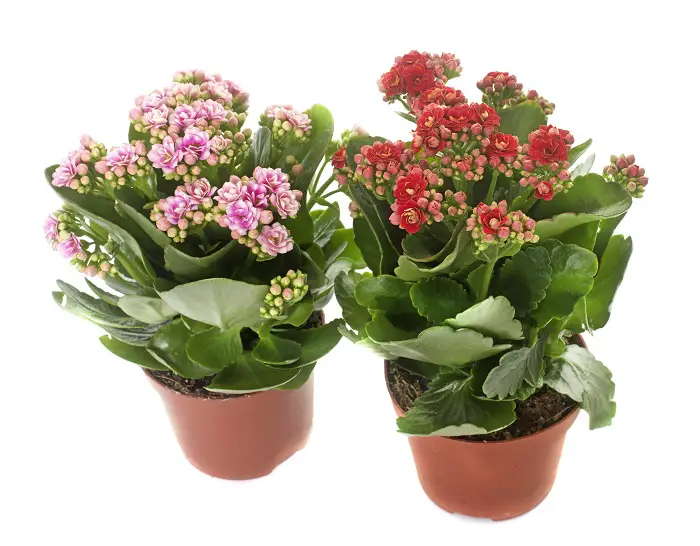
Toxins in kalanchoe can affect the heart’s rhythm and rate and can also cause gastrointestinal irritation as well (source).
8. Yew
Yew contains taxine which can affect the central nervous system causing symptoms such as difficulty with coordination, trembling, as well as breathing difficulties (source).
In some extreme cases, taxine can also cause an irritation of the intestines and heart failure which can easily lead to death (source).
9. Amaryllis

Be extra careful if you’re one to adorn your house with amaryllis during Easter as it is dangerous for your dog. Amaryllis is known to contain some toxins which can cause diarrhea, vomiting, pain in the gut, hypersalivation, depression, tremors, and anorexia (source).
10. Autumn Crocus

Another dangerous plant, autumn crocus can lead to oral irritation, vomiting (with blood), diarrhea, multiple-organ damage, as well as suppression of the bone marrow (source).
11. Chrysanthemum

Very popular. Very dangerous. Chrysanthemum contains pyrethrins, and if ingested, pyrethrins can cause stomach upset which may present as drooling, diarrhea, and vomiting.
There are also cases where ingestion of the toxin has led to depression as well as loss of coordinating ability. This is especially so if your dog consumes enough of the plant (source).
12. English Ivy

Going by all kinds of other names including “sweetheart Ivy,” there’s nothing sweet about this plant. It contains triterpenoid saponins which cause gastrointestinal problems symptomized by hypersalivation, abdominal pain, vomiting, and diarrhea (source)
By the way, Ivy foliage is more toxic than its berries. But even though it’s highly unlikely that your dog would approach Ivy foliage and begin to munch away, then again, it’s always better to err on the side of caution.
13. Peace Lily
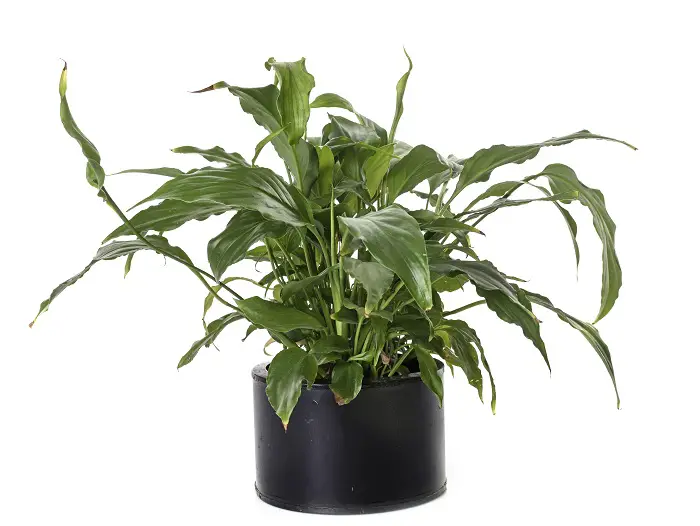
Peace Lily contains calcium oxalate crystals which mostly irritate the mouth. These crystals cause an irritation of the mouth which eventually leads to excessive drooling, difficulty in swallowing, vomiting, an intense burning in the mouth, tongue, and lips of the pet as well (source).
14. Pothos

Pothos is a really common household plant – both the Epipremnum and the Scindapsus. When ingested by dogs, toxins in pothos can cause irritation and swelling in the oral tissues. It could also lead to swelling of the gastrointestinal tract as well (source).
15. Schefflera
Just like Peace Lily, Scheffelera contains calcium oxalate crystals. For symptoms these crystals cause, see Peace Lily, if you skipped it (source).
16. Poinsettias

When ingested, these ones mostly affect the mucus-membrane by irritating the membrane. Thankfully, they aren’t too dangerous as long as you treat the matter promptly and properly (source).
17. Karaka Tree Berries
This one is particular to New Zealand. These berries look like delicious fruits as they turn orange when they ripen. However, if eaten by your dog, it can turn fatalistic.
Karaka tree berries contain an alkaloid – karakin which is highly toxic. When ingested, karaka berry poisoning is symptomized by convulsions, weakness, confusions, and vomiting.
Symptoms of karaka berry poisoning are usually delayed by about 24 to 48 hours. So, if you think your dog has had even one, kindly see your vet immediately.
Also, experts warn that these berries remain poisonous for a very long time. So, even if it’s a berry from the previous season, it’s possible for it to still be toxic to the consumer (source).
18. Aloe Vera
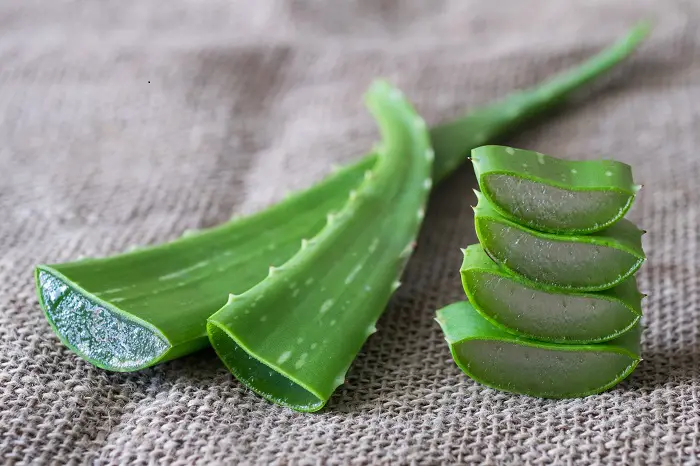
Aloe Vera is another common plant grown in many households especially for treating burns. However, it is not something you want your dog to ingest, so keep it out of their reach. Symptoms of Aloe Vera poisoning include vomiting, diarrhea, a change in the color of the urine, tremors, and anorexia (source).
19. Baby’s Breath

As innocent as this plant sounds, Baby’s Breath is a real bad boy. If ingested, this flower can cause diarrhea and vomiting in dogs (source).
20. Begonia

Another popular garden plant, Begonia is known to be toxic to dogs especially the tubers. Symptoms of Begonia poisoning include an irritation of the oral cavity, intense burning in the mouth, lips, and tongue, excessive drooling, swallowing difficulty, and vomiting (source).
21. Carnations

Although not as poisonous as the other flowers on our list, carnations are common in floral arrangements and can cause mild symptoms. These can range from mild gastrointestinal upset to a mild case of dermatitis (source).
22. Daffodil

Daffodils, especially at the bulbs, are super toxic to dogs. Symptoms of this toxicity include vomiting, diarrhea, salivation, convulsions, decreased blood pressure, cardiac arrhythmias, and tremors (source).
23. Gladiola

Usually, the bulb of the gladiola is the toxic part of this flower. So, generally, it might not be as dangerous as some other plants. Nonetheless, better safe than sorry. Symptoms of poisoning by gladiola corms include salivation, drooling, diarrhea, lethargy, and vomiting (source).
24. Hosta
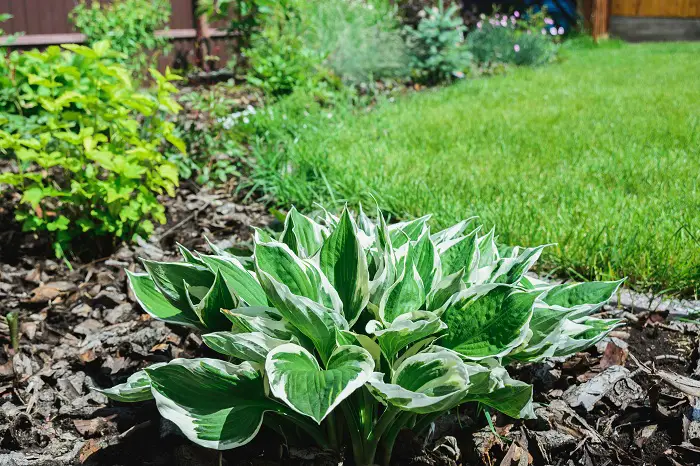
Dogs are, naturally, not attracted to Hostas but still, you want to be careful. Some dogs can be really inquisitive. Hostas are toxic to pets and can lead to depression, diarrhea, and vomiting (source).
25. Milkweed

Milkweed is wonderful to have in your garden especially because of the monarch butterflies. Nonetheless, milkweed is quite toxic, and you should know (source).
When consumed, milkweed poisoning can cause multiple symptoms, all of them bad. They include vomiting, weakness, severe depression, anorexia, diarrhea. Sometimes, these are then followed by a rapid and weak pulse, seizures, breathing difficulties, dilation of the pupils, failure of the liver or kidney, paralysis of the respiratory tract, and finally, even death (source).
26. Morning Glory

This one causes hallucinations in dogs that consume them among other symptoms. These symptoms include gastrointestinal upset, tremors, agitation, ataxia, disorientation, and anorexia (source).
27. Tomato Plant
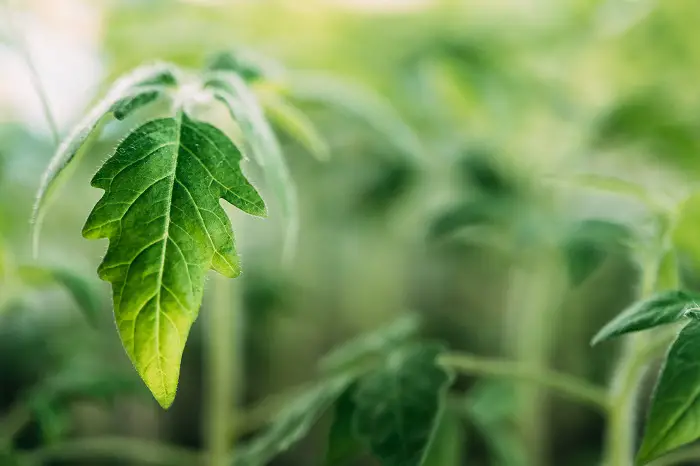
Dogs must not eat the tomato plant, or certain parts of the tomato fruit either. Although not lethal, it could still cause a significant level of discomfort for your little pooch (source).
Symptoms of poisoning include hypersalivation, loss of appetite, intense gastrointestinal trouble, drowsiness, diarrhea, depression of the central nervous system, change in behavior, confusion, weakness, dilation of the pupils, as well as a decrease in heart rate (source).
28. Holly Berries
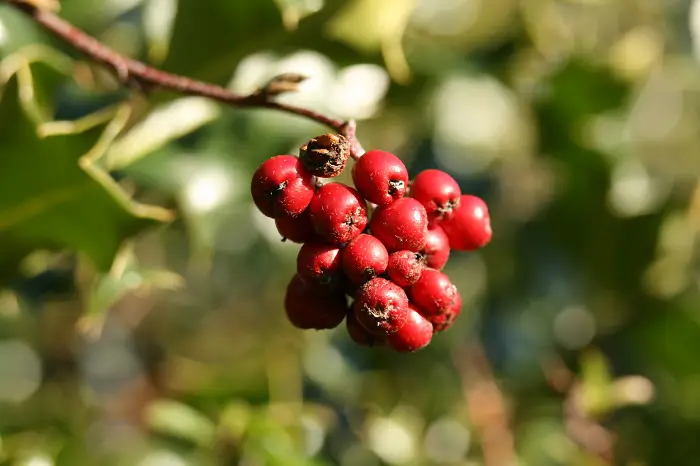
Of course Holly Berries remind you of one thing only – Christmas! With their typical green leaves and red berries, holly berries can look really enticing. However, when consumed by dogs, they can cause diarrhea, vomiting, stupor, and dermatitis.
Luckily, effects are often mild since the berries are so bitter, dogs don’t, typically, consume them in large quantities (source).
29. Mistletoe
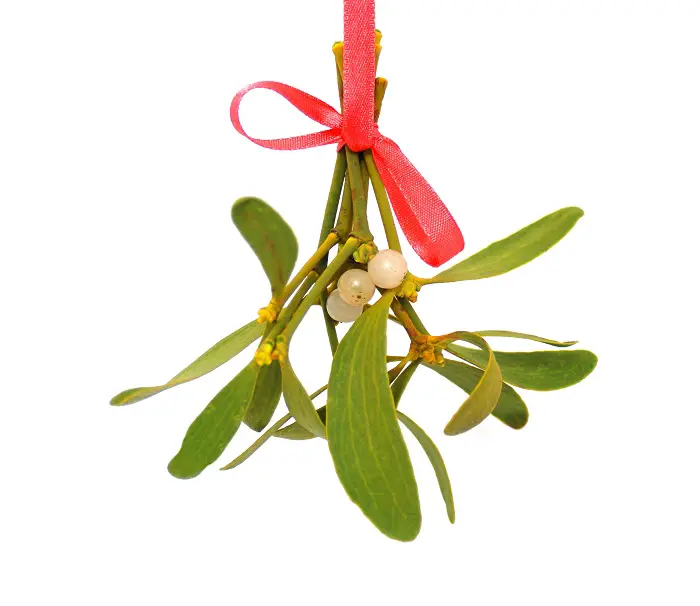
Doesn’t thinking of a mistletoe just make you smile? Well, you probably didn’t know but eating even a few berries can cause diarrhea, vomiting, as well as moderate levels of intestinal and stomach pain in dogs.
If severe, symptoms might progress to labored breathing, reduced blood pressure, and cardiac failure. So, always ensure that the mistletoe is hung high enough to be out of the reach of your pet (source).
30. Dumbcane

With its vibrant color, dumbcane is a good idea when you want to liven your living space a little bit. However, dumbcane is quite dangerous to pets. Especially if your dog loves to chow down on foliage, you’d have to be extra careful about this one.
Symptoms of poisoning usually include inflammation and injury to the lips, tongue, and throat. In some cases, blindness might also result as well as respiratory trouble. Excessive drooling, difficulty in swallowing and vomiting are other symptoms (source).
In fact, many dogs often require hospitalization after eating dumb cane. It’s that bad.
31. Water Hemlock
Water Hemlock is the most violently toxic plant in North America (source). The plant contains a highly toxic substance called cicutoxin. For this toxin, only tiny amounts are needed to cause unbelievable damage in the consumer. Not all parts of the water hemlock are toxic though – mostly the roots. Nonetheless, the effects of ingestion are drastic.
Water Hemlock is so toxic that it barely takes 15 minutes to 2 hours after consuming the plant to develop clinical signs or even die.
Symptoms of poisoning include nervousness, drooling, dilated pupils, muscle twitching, tremors, rapid breathing, increased heart rate, seizures, tremor, and coma.
Luckily, if instituted quickly, treatment can help save the life of the victim.
Now, although water hemlock is considered a bigger risk for grazing animals, there has been a report of a 3-year old border collie chowing down on water hemlock mistakenly. She died within the hour (source). So, better safe than sorry.
32. Jimson Weed (Thorn Apple)
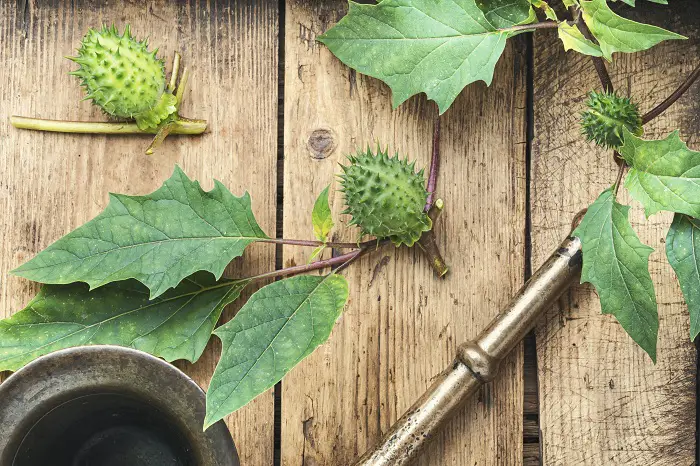
This plant goes by many other names including devil’s trumpet. All parts of the plant contain toxins which are moderately poisonous to dogs. Symptoms include dilation of the pupils, sensitivity to light, anxiety, restlessness, intestinal stasis (the content of the intestines don’t flow normally), dry mouth, increased heartbeat, walking drunk, as well as respiratory failure (source).
33. Bleeding Heart

The Bleeding Heart plant is quite toxic to dogs, and all animals, in fact. Though the plant might look really attractive, it should never be consumed by pets due to its toxicity. Fortunately, this plant is not highly toxic. However, it contains alkaloids that can negatively affect dogs especially.
Some symptoms of poisoning include vomiting, tremors, diarrhea, and staggering (source).
34. Ornamental Bulbs

Especially in the fall, ornamental bulbs present a huge problem for gardeners with pets. Dogs are naturally curious and, as such, can get into digging up flower bulbs either planted or unplanted.
Some of the symptoms of ingestion of these ornamental bulbs range from mild stomach upset in dogs to more serious symptoms like cardiac arrhythmias, to seizures, even to death.
Ornamental bulbs are so poisonous, they cause more devastating effects when consumed than when foliage is consumed. This is because most of the toxins found in bulbous plants are concentrated in the bulbs (source).
35. Foxglove

Just like other flowers, Foxglove is quite beautiful. However, it is more dangerous than it is beautiful. In fact, Foxglove is more poisonous even to humans as they contain bufadienolides or cardenolides, naturally-occurring toxins that damage the heart.
Also called cardiac glycoside toxins, these poisons directly affect the heart muscles which destroys the heart.
There are many plants that contain glycosides. However, the level of poisoning each plant comes with depends on the plant being discussed. Mostly, every part of such plant is generally toxic. In fact, the water into which it is placed in the vase has also been reported to be toxic as well.
Symptoms of glycoside poisoning include abnormal heart rate and rhythm, a life-threatening increase in potassium levels, drooling, nausea, vomiting, tremors, dilation of pupils, as well as seizures (source).
36. Jerusalem Cherry
All parts of the Jerusalem Cherry, including the berries, are considered toxic as they contain solanine. Solanine is a glycoalkaloid which can cause grave irritations in the gut when ingested.
In some cases, symptoms might include diarrhea, drooling, ulceration, vomiting. In other cases, symptoms might be more related to the central nervous system like seizures and depression (source).
37. Larkspur

A beautiful flowering plant, the Larkspur contains toxins known as diterpene alkaloids which act by inhibiting acetylcholine. This action has a neuromuscular blocking effect which is symptomized by weakness, abnormal heart rhythms, drooling, abdominal pains, constipation, tremors, paralysis, and seizures.
If ingested in large quantities, these toxins can cause lung and heart failure which can result in death (source).
38. Lily of the Valley

Just like Foxglove, Lily of the Valley contains glycosides which cause about the same symptoms as foxglove.
Now, even though Lily of the Valley is not as poisonous as other lilies, be careful with it still. You must treat aggressively after poisoning is confirmed else things could quickly turn south.
Some of the clinical signs of poisoning include vomiting, reduced heart rate, diarrhea, cardiac arrhythmias, as well as seizures (source).
39. Marijuana
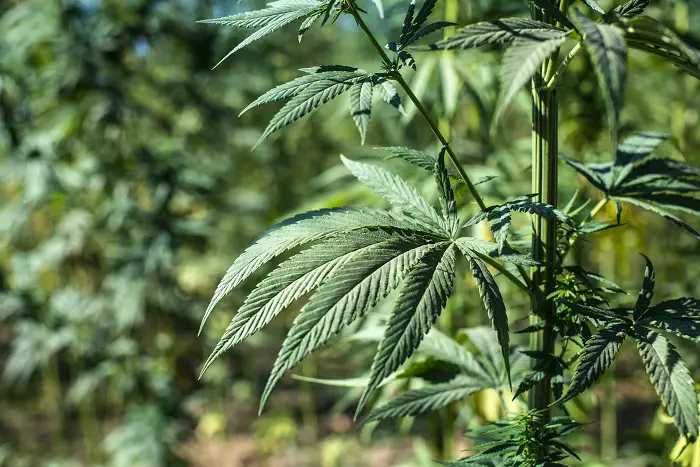
One of the reasons for the increased risk in marijuana poisoning in dogs is that it is becoming legalized in many states across the country.
As many vets have confirmed, dogs will be able to consume anything including marijuana, whether in the form of the raw leaf, or when infused into foods. Fortunately, consumption of marijuana is rarely fatal for dogs, although, it could leave them very sick.
Symptoms of marijuana poisoning include a loss of coordination, incontinence, as well as hypersensitivity (especially to touch and sounds). A slower heart rate and lower body temperature are also symptoms that might be presented with the ingestion of marijuana in dogs (source).
40. Stinging Nettle
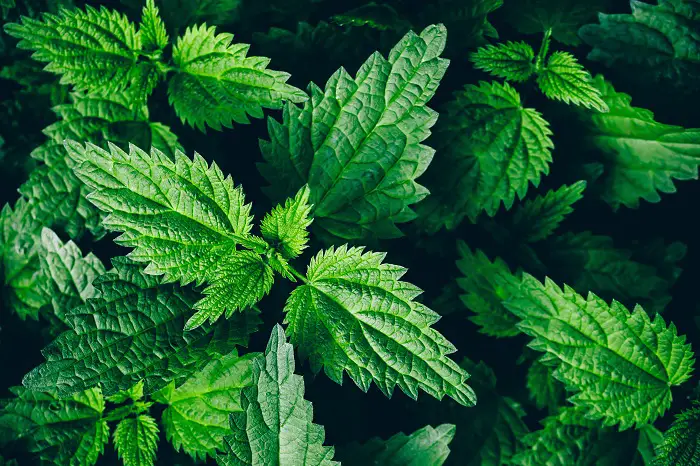
Like the name sounds, this plant comes covered in tiny, fine hairs called trisomes. These trisomes typically break their tips when they are handled. As a result, they then inject histamine into the tissues of the dog who ingests it.
When ingested, histamine typically causes excessive salivation, vomiting, pawing at the mouth, breathing difficulties, ataxia, and muscle fasciculations or twitching (source).
41. Hyacinth

Just like tulips, hyacinths are highly poisonous as they contain allergenic lactones, or, in some cases, other similar alkaloids. These toxins are highly concentrated in the bulbs, in comparison to the leaves and flowers.
If ingested in large amounts, these toxins can result in severe clinical signs which can result in an irritation of the mouth or esophagus. The irritation of the mouth then produces drooling and vomiting. In some cases, it might even result in diarrhea.
In large amounts, more intense symptoms might result in an increase in the heart rate and breathing difficulties (source).
42. Chinaberry
With the Chinaberry tree, all parts of this plant are considered toxic especially the berries. The plant contains high levels of meliatoxins, especially the berries which have the highest concentration of the toxins.
Clinical signs of poisoning typically include excessive salivation, diarrhea, vomiting, and depression.
If ingested in too high a dose, toxicity can further lead to seizures and/or death (source).
43. Horse Chestnut
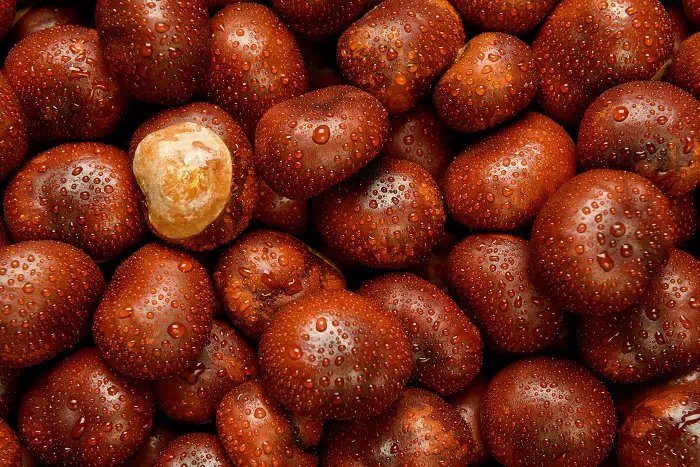
Horse Chestnuts are really attractive because of their shiny appearance. However, consuming these nuts could cause dogs to throw up, collapse, and even suffer paralysis of the respiratory system even. These nuts could also cause serious blockage of the gut in animals as well.
In most cases, all it takes are about 6 hours max for victims to start manifesting the horrific symptoms of poisoning (source).
44. Privet
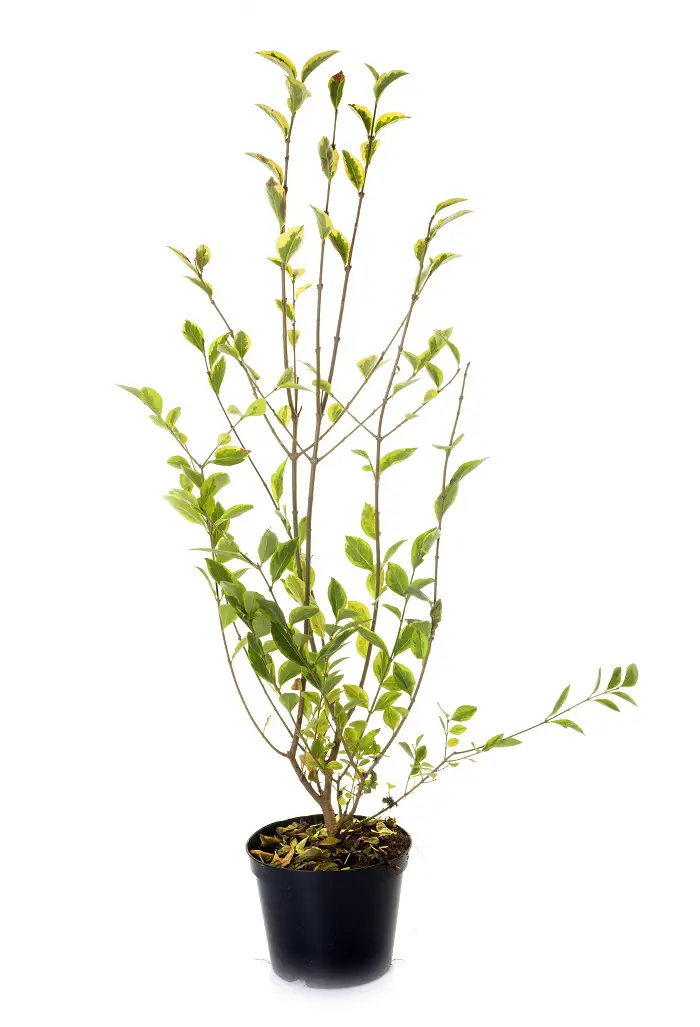
Privet is generally mildly to moderately poisonous when consumed, still it is another plant to watch out for because very part of the shrub contains the toxin – oleanolic acid.
When ingested, privet affects the gut, leading to vomiting, diarrhea and loss of appetite. If consumed in high doses, symptoms might also aggravate to loss of coordination, as well as an increase in respiratory and heart rates, and then death (source).
45. Wisteria

Wisteria contains toxins known as lectin or wisterin glycoside. When consumed, this toxin leads to vomiting which might, sometimes, contain blood. It could also lead to diarrhea as well as depression (source).
46. Prairie Lily (Rain Lily)

The bulb of this lily is considered the most dangerous part of the plant. When consumed, the prairie lily can cause quite an intense stomach upset in dogs (source).
47. Calla Lily

This contains oxalate crystals (which we have discussed before). These crystals are absorbable into the skin when the dog comes in contact with them, even by nibbling alone.
When they come in contact with the mouth or when ingested, oxalate crystals cause a severe burning in the mouth, oral irritation, profuse drooling, vomiting, as well as swallowing difficulties (source).
48. Daphne
Generally, poisoning by Daphne is quite moderate until it is ingested in large amounts. The toxins (called diterpenes) are concentrated in the leaves, fruit, and bark of the Daphne plant.
When ingested, diterpenes can cause ulcerations of the mouth and esophagus, even the stomach. It might also lead to excessive drooling, vomiting, as well as bloody stooling.
If ingested in large amounts, poisoning might lead to seizure, coma, and although rare, even death is possible (source).
49. Belladonna (Deadly Nightshade)
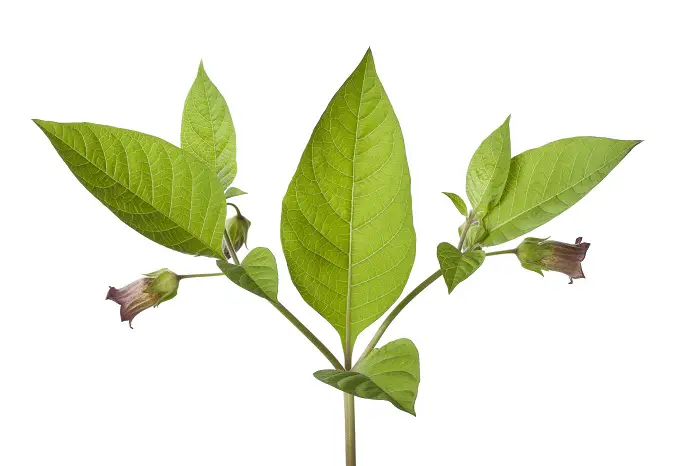
Every part of the Belladonna is considered rather toxic, containing tropane alkaloids as well as scopolamine. This plant becomes even riskier in the fall when its shiny berries begin to fall. Because they are shiny, they are, potentially, very attractive to pets, and even children.
However, the alkaloids contained in Belladonna are anticholinergic. They interfere with nerve impulses by intercepting receptors in the nerve cells. This leads to hallucinations, an increased heart rate, depression, or even respiratory organ failure (source).
50. Climbing Nightshade
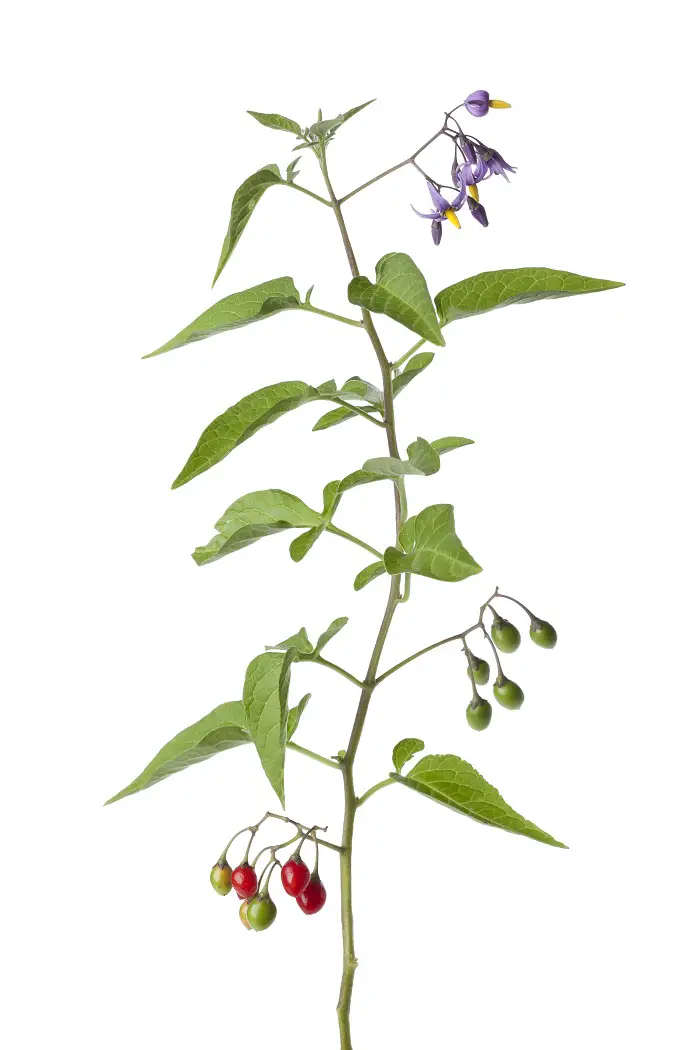
The Climbing Nightshade contains solanine which is moderately toxic. If ingested, this toxin produces diarrhea, vomiting, drowsiness, as well as reduced blood pressure and heart rate (source).
51. Nicotiana
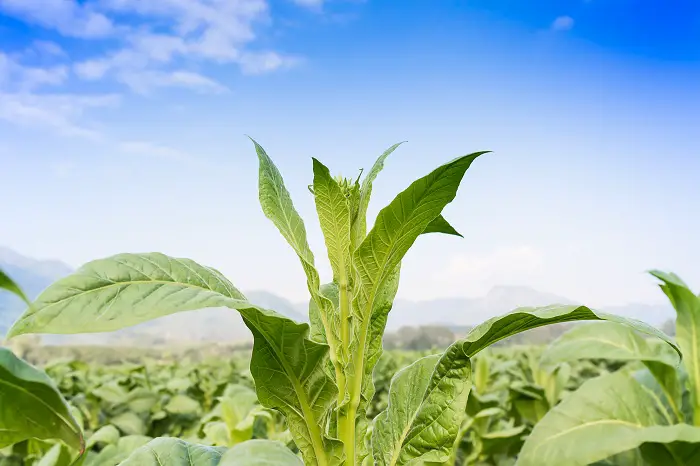
Nicotiana contains nicotine which has been proven to be toxic to dogs among other animals. Some of the sign of nicotine poisoning in dogs include hyperexcitability followed by depression, vomiting, loss of coordination, paralysis, and even death is possible (source).
52. Lupine

Particularly, the seeds of the Lupine are considered toxic. It’s mostly a problem for ruminants but dogs can also be affected. The seeds, especially, are quite poisonous but are only really poisonous if consumed at too high a dose.
Some of the symptoms of poisoning include depression of the respiratory system, a reduced heartbeat, drowsiness, and convulsions (source).
53. Morning Glory

Depending on the amount of seeds ingested, Morning Glory is, generally, mildly to moderately poisonous when ingested. Also, not all species are poisonous.
For the poisonous species, though, only when a large amount of seeds are consumed at a time. When that happens, if that happens, lysergic alkaloids (toxins) are released which lead to certain clinical symptoms.
These symptoms include agitation, loss of coordination, mild vomiting, which may also be accompanied by diarrhea (source).
54. Star of Bethlehem

Acts like Foxglove.
55. Scotch Broom
Scotch Broom is, generally, mildly to moderately poisonous and that depends on the amount ingested.
The plant itself only contains small amounts of the toxin known as quinolizidine alkaloids found in all parts of the plant. When ingested, these alkaloids can cause abdominal upset, vomiting, loss of coordination, as well as an increase in heart rate (source).
56. Burning Bush

In times past, the Burning Bush was commonly used in Native America as folk medicine. However, this plant is now listed as unsafe in the Food and Drug Administration’s list of unsafe herbs.
Every part of this plant is considered toxic and can also be purgative and laxative to a dangerous degree.
Burning Bush contains cardiac glycosides which makes it even more toxic to pets, and even to humans (source).
57. Golden Chain Tree
The flowering vines produced by this tree contain quinolizidine alkaloids which are toxins. These toxins produce symptoms such as vomiting, loss of coordination, and weakness when consumed (source).
58. Mountain Laurel
This plant is so toxic, it is also known as “Sheepkill.” It is mostly found in pastures and, as such, is a danger to grazing animals mostly. This does not mean dogs can’t get poisoned by it, though.
Mountain laurels contain grayanotoxins known as diterpenoids. If ingested, they can interfere with sodium channels, and affect the muscles of the skeleton and the heart. Also, symptoms produced by this toxin could include vomiting, excessive salivation, diarrhea, tremors, arrhythmias, coma, as well as death (source).
59. Pokeweed

This is another plant where all its parts are toxic. Every part of the pokeweed contains toxins known as oxalates and saponins, and they can cause serious irritations in the gastrointestinal tract.
Now, although all parts of this plant are considered toxic, the berries are not really known to be as toxic. In fact, in most cases, they get egested from the body without much event.
Symptoms of pokeweed poisoning are usually seen as excessive salivation, throwing up, loss of appetite, diarrhea, tremors, reduced blood pressure (source).
60. Sweet Pea
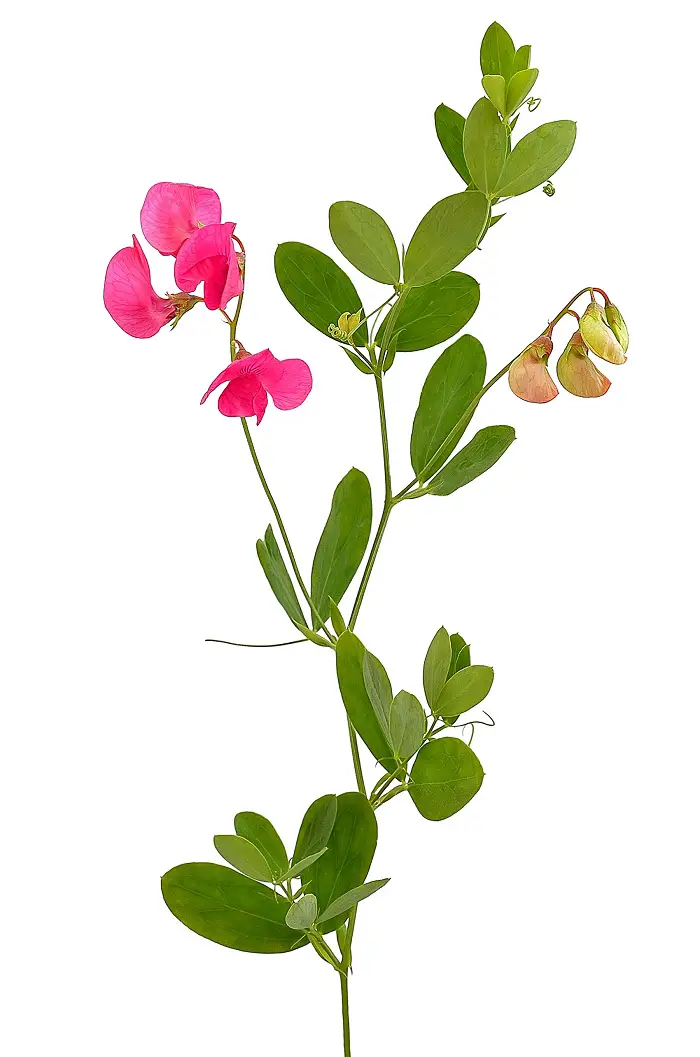
Sweet Pea is only mildly to moderately toxic and the toxic principle here is aminoproprionitrite which is an amino acid.
If ingested, aminoproprionitrite can cause musculoskeletal as well as neurological signs which range from lethargy to weakness to seizures, and tremors.
Usually, this is a bigger threat for large, grazing animals. Nonetheless, dogs can also be affected by it (source).
61. Fig
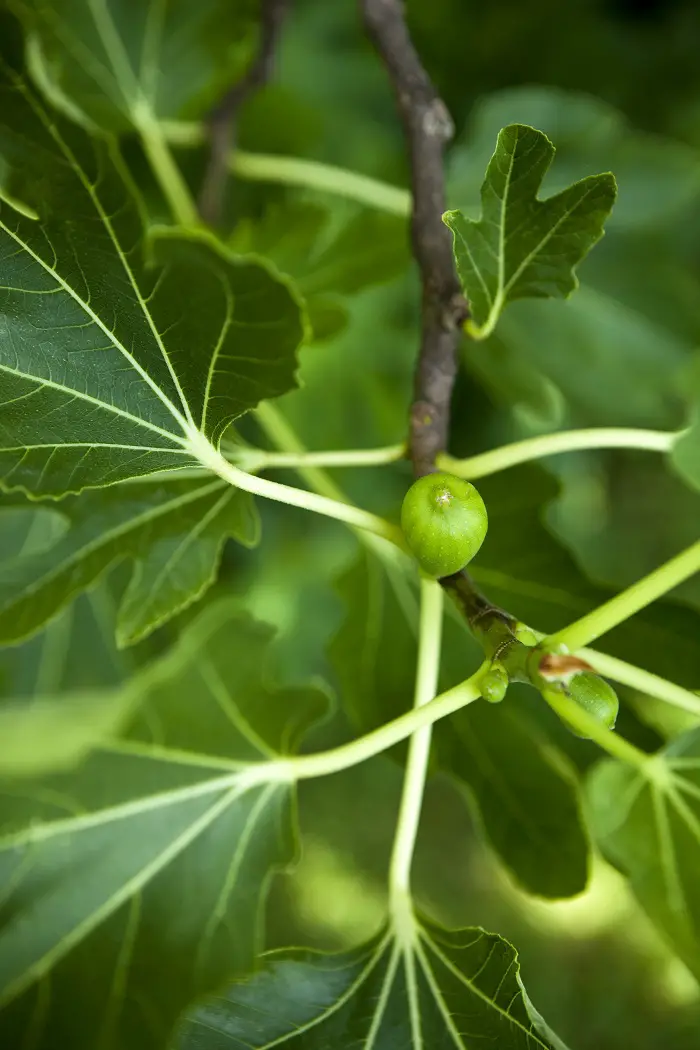
While figs are, generally, not toxic for dogs, the plant itself can be, although toxicity is only mild. Fig plants are known to have quite an irritating sap.
Following ingestion, dog parents want to check their pet for any oral irritation or an irritation of the gastrointestinal tract. It’s also possible to observe a degree of dermal irritation if some of the sap gets to your dog’s skin (source).
62. Hydrangea

Contains cyanogenic glycosides, heavily concentrated especially in the flowers and leaves. If ingested, this plant causes lethargy, diarrhea, and vomiting (source).
63. Yellow Oleander
The parts most toxic in the Yellow Oleander are the fruits. These fruits contain all kinds of cardenolides which we know to be quite similar to what you have in Foxglove. They also act the same way as the toxins in Foxglove. Check the point on Foxgloves for more information (source).
64. Buttercup

Buttercups are mostly a threat to grazing animals as they are found in fields, grazing pastures, and meadows. Just a few are actually ornamental.
Anyway, Buttercup contains ranunculin which releases protoanemonin once masticated or crushed. The oil released irritates the mucous membranes in the gastrointestinal tract.
The flower part of the Buttercup is the most poisonous. Fortunately, it’s quite bitter and so the risk is reduced as animals are not normally tempted to eat large enough quantities of this to cause damage (source).
65. Iris

Irises tend to cause an irritation to the sinuses when handled or ingested. Toxins in the iris are concentrated in the bulbs or rhizomes of the plant.
Symptoms of poisoning include vomiting, excessive salivation, lethargy, and diarrhea (source).
66. Snowdrops

True to their name, these plants, indeed, look like snowdrops with their small, white flowers which hang down. In the stems, bulbs, and leaves of the snowdrops are the toxins which are phenanthridine alkaloids. The bulbs, however, have the highest concentration of the toxins.
If you think your dog might have ingested any part of this plant, look out for drooling, abdominal pain, vomiting, diarrhea, loss of coordination, a reduced blood pressure as well as reduced heart rate, and seizures (source).
67. Calla Lily

The Calla Lily contains insoluble calcium oxalate crystals which, when released into the tissue cause an irritation of the mouth and the alimentary canal.
Also, on some very rare occasions, ingestion might also lead to the inflammation of the upper part of the respiratory tract, leading to breathing difficulties (source).
68. Chinese Evergreen
Similar in action to the calla lily (source).
69. Elephant Ear
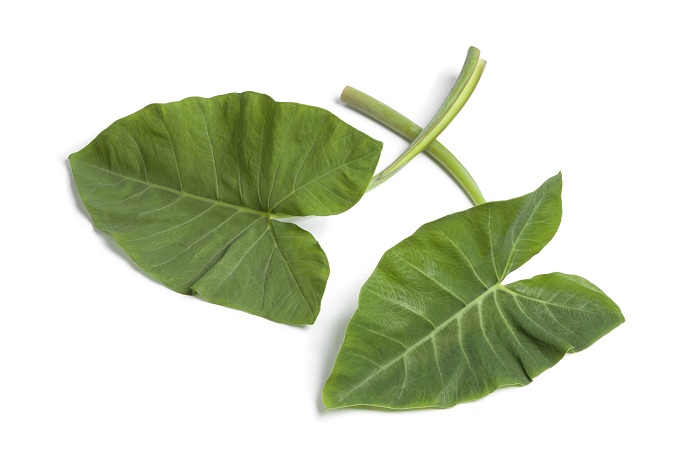
Similar in action to the calla lily (source).
70. Heartleaf Philodendron
Similar in action to the calla lily (source).
71. Poppy

The toxin contained in a poppy depends on the kind of poppy it is. Some of them go for the central nervous system – the brain, for instance.
However, generally, if ingested, poppy tends to lead to a sedated or euphoric dog. Clinical symptoms include a loss of appetite, crying, and pinpoint pupils (source).
72. Jack-in-the-Pulpit
Similar in action to the calla lily (source).
73. Split-Leaf Philodendron

Similar in action to the calla lily (source).
74. Chamomile

Chamomile is a common calming herb used for aromatherapy and also in teas. However, experts say that while chamomile is safe as an ingredient in products for your pooch, your dog will better off not getting close to the actual plant.
The chamomile plant contains volatile oil, chamazulene, bisabolol, tannic acid, and anthemic acid. These toxins are known to cause some relatively serious symptoms in dogs when handled.
Some of these symptoms include contact dermatitis, diarrhea, vomiting, allergic reactions, and anorexia. If use is prolonged, the victim might also come down with bleeding tendencies (source).
75. Chives

Just like its cousins in the Allum family, chives are quite toxic to dogs, although they can be tolerated at low doses. Some dog treats even have a small helping of chive flavoring. However, it is always advised that your dog stays away from the Allum guys altogether.
Symptoms of poisoning include excess salivation, irritation in the mouth, vomiting, lethargy, diarrhea, pain in the abdomen, increased heart rate as well as respiratory rate, exercise intolerance, weakness, pale gums, collapse.
At really toxic levels, chive poisoning can even cause damage to red blood cells, leading to untimely rupturing which can lead to anemia.
Now, when it comes to chive poisoning, some breeds like the Japanese breeds (e.g. Shiba Inu, Akita) are more prone to poisoning than others. It doesn’t mean, though, that other dogs can’t get poisoned by chives though. So, better to err on the side of caution (source).
76. Hops
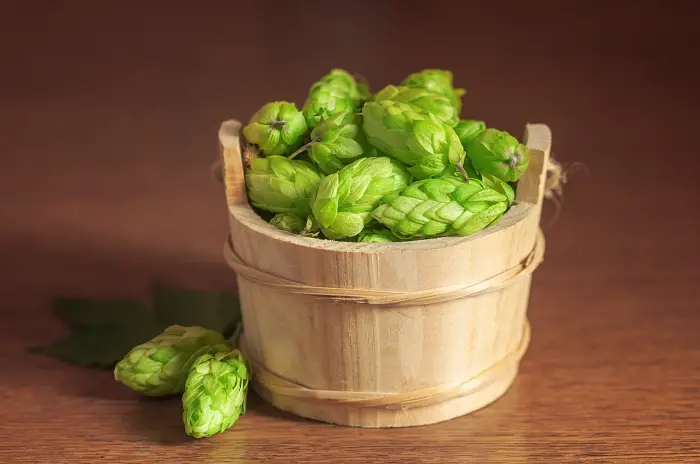
More and more people are home-brewing and this calls for more watchfulness on the parts of dog owners, especially those who have that as a hobby.
Hops are ginormous vines. Plus, they climb, so they aren’t so difficult to identify.
Now, the effects of consuming hops can get really severe, especially in its dried form. To be on the safe side, you want to keep any material involved in your home brewing out of the reach of your pet.
In all its forms (dried, fresh, cooked i.e. spent) hops are quite hazardous and can produce symptoms such as a raised body temperature, panting, seizures, and death (source).
77. Leeks
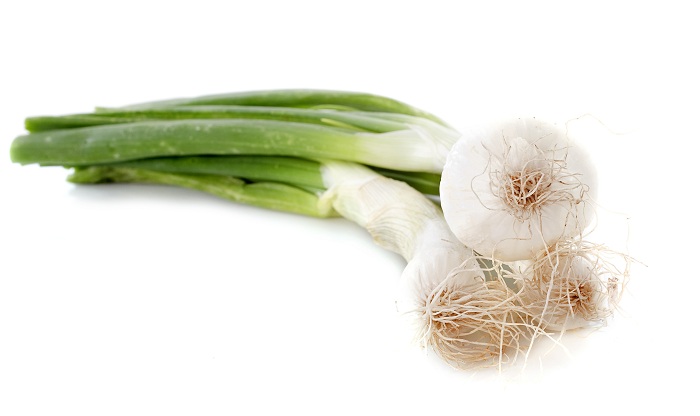
Leeks might not be as popular as onions, garlic, and chives. However, they are still quite toxic to dogs. In fact, they operate quite similarly to chives (source).
78 Bishop’s Weed (Laceflower)
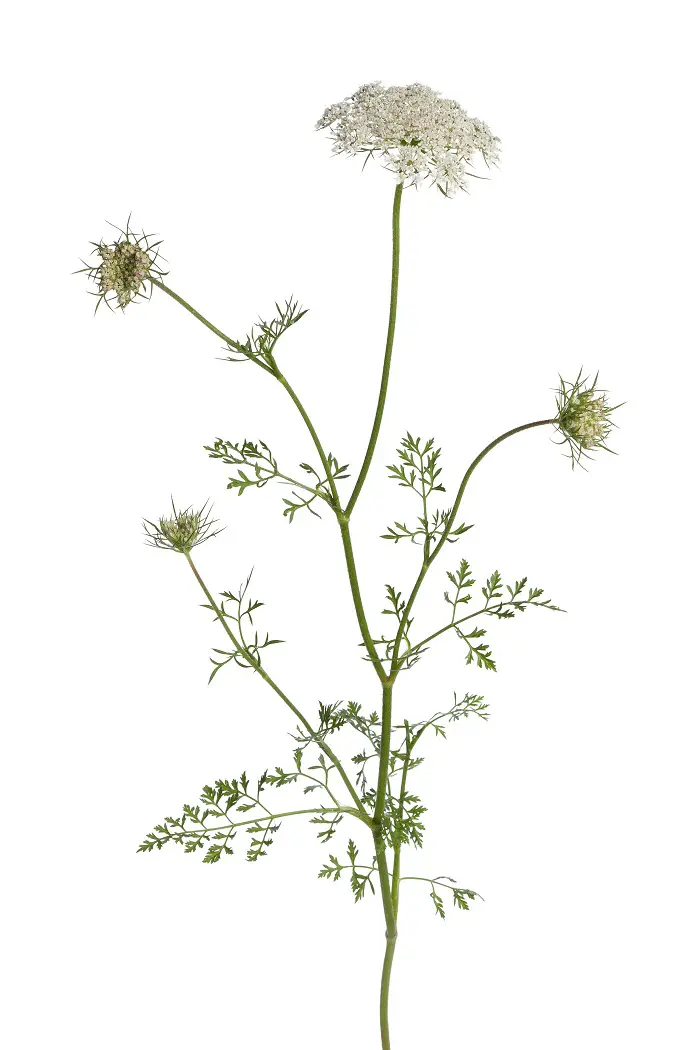
Quite versatile, and known as a garden plant, this flower is popular in many floral arrangements. It belongs to the same family as the carrot. But, unlike the carrot, touching or ingesting this flower can cause serious symptoms in dogs.
This flower contains toxins – insoluble calcium oxalate which can bring about symptoms such as oral irritation, a feeling of intense burning in the mouth, lips, and on the tongue, excessive salivation, as well as swallowing difficulties (source).
79. Clematis

Beautiful with really colorful flowers that grow bright in the sunlight, clematis is everything a dog owner doesn’t want their dog taking in.
The plant contains some glycosides which cause irritations when consumed by pets. Typically, they cause increased salivation when ingested, with vomiting as well as diarrhea.
Fortunately though, clematis is quite bitter and so dogs don’t usually consume it in large amounts enough to cause a severe reaction (source).
80. Periwinkle

Although rare, this beautiful plant could even cause death if consumed, although that’s quite rare. The plant contains toxins known as Vinca alkaloids.
These alkaloids lead to symptoms such as vomiting, reduced blood pressure, diarrhea, tremors, depression, coma, seizures, and death (source).
81. Primrose

Another attractive plant, primrose is another toxic plant although the toxin contained in it is unknown. The good thing is that effects are only mild in dogs and are easily resolved. Only known symptom is mild vomiting (source).
82. Yarrow
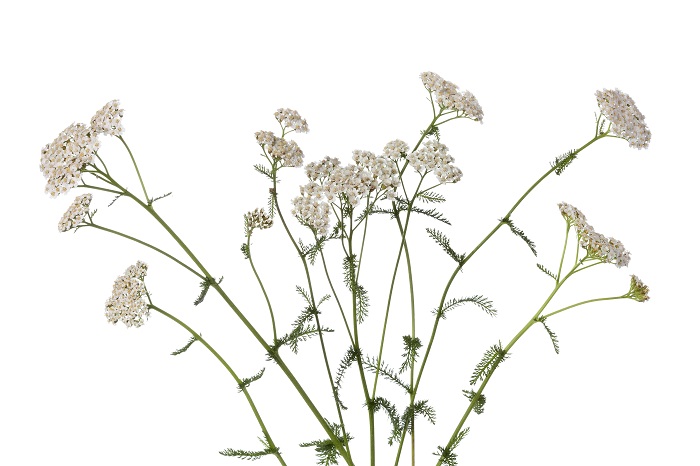
Yarrow is a perennial plant that is commonly found spreading in gardens. Research has it that this plant has many toxic principles which produce untoward reactions in dogs when ingested.
Toxins in yarrow include achilleine and alkaloids. They produce symptoms such as an increased need for urination, diarrhea, vomiting, and dermatitis (source).
83. Apple Tree
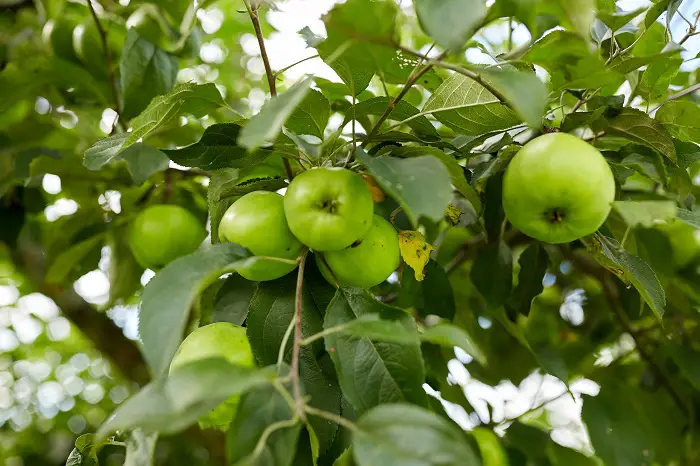
Although apples are great for dogs, certain parts of the apple tree such as the stem, leaves, and seeds contain toxins – cyanogenic glycosides. Especially when wilting, these parts of the apple tree pose a huge risk of poisoning to dogs.
Some symptoms of poisoning include mucous membranes that are brick-red in color, dilation of the pupils, breathing difficulties, shock, and panting (source).
84. Peonies

Peonies are beautiful shrubs usually found in gardens and planted as hardy perennials. If ingested, peonies can cause vomiting, diarrhea, with reduced energy levels (source).
85. Black Walnut
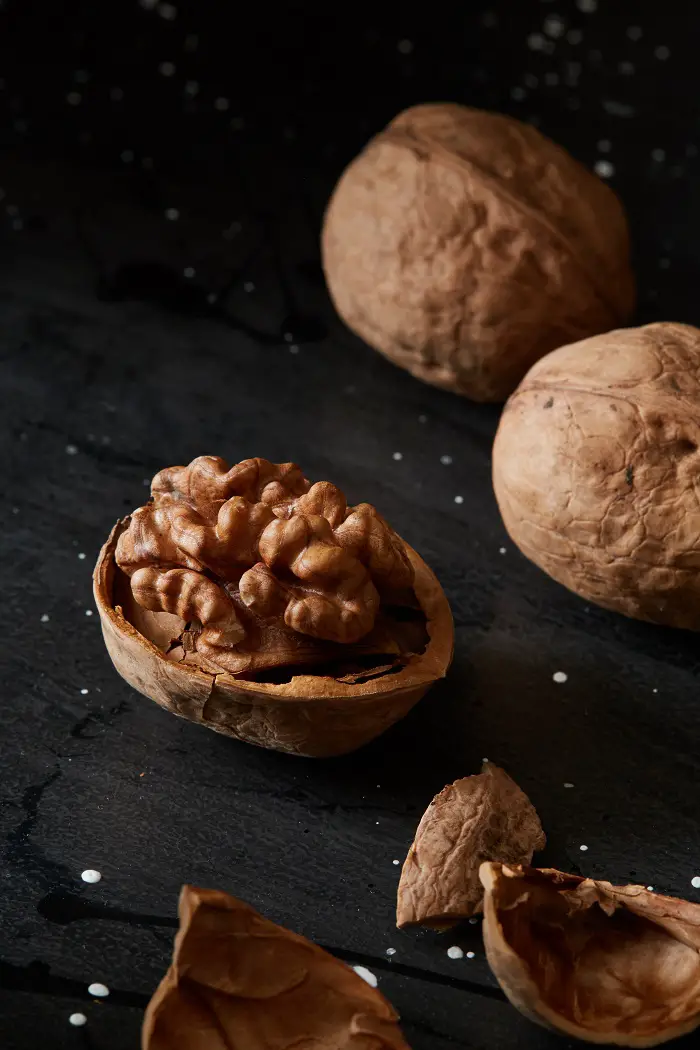
Black walnuts begin to mold and decay once they fall from their tree. Being that dogs are curious, they might, naturally, get interested. However, if ingested, black walnut can cause stomach upset as well as seizures in dogs (source).
86. Lenten Rose

This plant contains several toxins including bufadienolides, veratrin, glycosides, and prtoanemonin. Ingesting these could lead to excessive salivation, pain in the abdomen, diarrhea, as well as colic and depression (source).
Please note that all parts of this plant are considered toxic, even though symptoms are mild and typically disappear in a day. Of course, symptoms become progressively more threatening depending on the quantity consumed (source).
87. Bittersweet
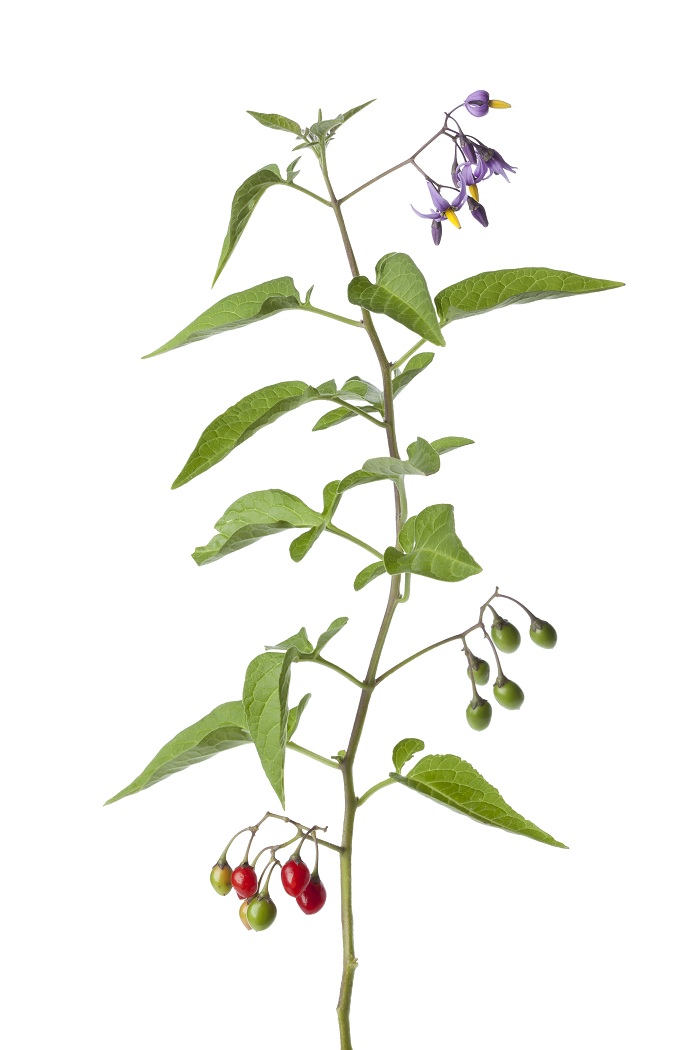
Toxicity is, generally, mild to moderate. The Bittersweet plant produces these bunches of small but brightly-colored fruits which are attractive to dogs.
The exact toxin in this plant is not known. However, it’s been established that ingesting the fruit causes symptoms such as vomiting, diarrhea, weakness, and, in large quantities, even seizures (source).
88. Lantana

Lantana contains triterpenoids, also called liver toxins, in all its parts. If ingested, lantana poisoning causes depression, diarrhea, vomiting, weakness, and even liver failure – although that’s rare with dogs (source).
89. Bird of Paradise

With the way the flower of this plant is located on its stalk, it sorta looks like a bird in flight, hence its name. Bird of Paradise can grow really tall and if digested, symptoms can begin to show in, as short as, 20 minutes after digestion.
Dog owners should look out for the following symptoms if they suspect that their dog has consumed Bird of Paradise: nausea, vomiting, drowsiness, rapid pulse, muscle tremors (source).
90. Snake Lily
Snake Lily contains pentacyclic terpenoids viz: zeorin, missourin, and missouriensin which is mostly concentrated in the rhizomes. The plant is quite toxic and produces symptoms such as salivation, drooling, vomiting, diarrhea, and lethargy (source).
91. Dock
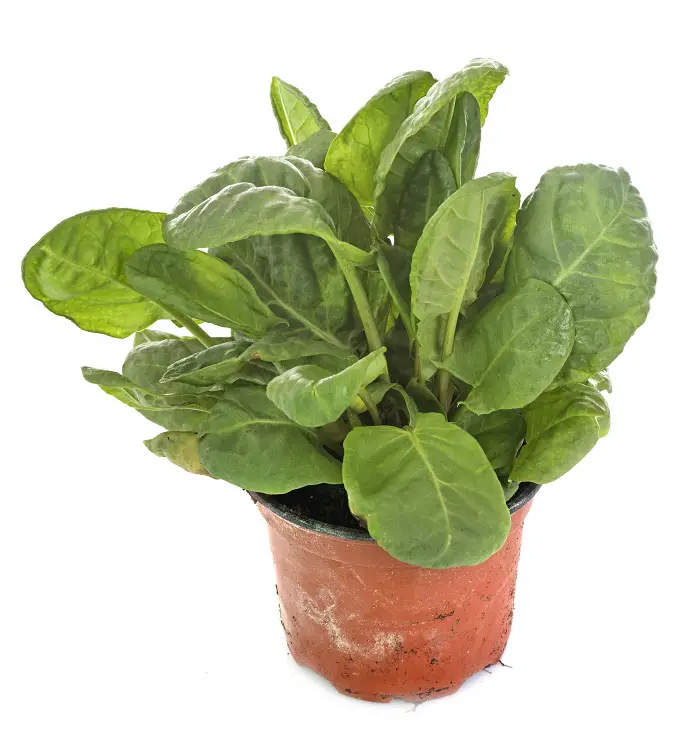
Dock contains soluble calcium oxalates which are quite toxic to pets. Poisoning often causes renal failure in dogs, tremors, and increased salivation (source).
92. Mayapple
Also known as the Indian Apple, this plant contains glycoside toxins known as podopyllotoxin which gets absorbed into the tissue easily.
If mistakenly ingested by your dog, look out for gastrointestinal irritation in the form of drooling, vomiting, and diarrhea, as well as irritation of the skin (source).
93. Baneberry
The toxicity of baneberry ranges from mild to severe depending on the amount consumed per time. The plant contains protoanemonin, essential oils, and glycosides which are quite irritating to the consumer. This, usually, helps to prevent the consumption of large quantities of plants which reduces the risk of poisoning (source).
94. Bloodroot
Bloodroot has strong medicinal properties which are great but can be harmful for pets. In fact, this plant has been confirmed to contain sanguinarine which some experts suspect to be a carcinogen.
Symptoms of poisoning include organ failure, nausea, vomiting, tiredness, vertigo, dizziness, tiredness (source).
95. Jessamine
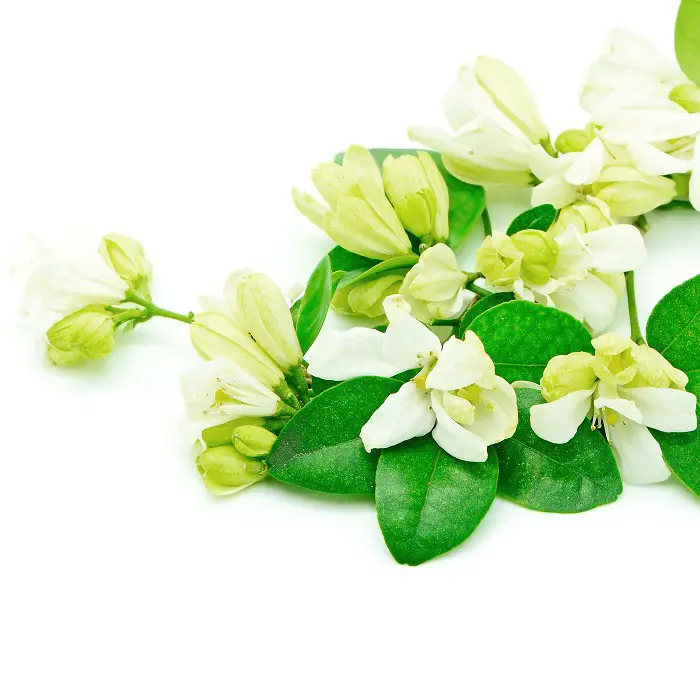
The toxicity of the Jessamine plant is moderately toxic as all parts of the plant carry neurotoxins which are known as gelsemine, sempervirine, and alkaloids.
Some of the symptoms of poisoning include muscular weakness, reduced respiratory rate, swallowing and breathing difficulties, sight problems, seizures, and, sometimes, death (source).
96. Ragwort

Thankfully, ragwort is not highly palatable and poisoning is, usually, as a result of ingesting ragwort in hay or the green parts of the plant.
Ragwort contains pyrrolizidine alkaloids which cause its victim to do “walking disease,” or “sleepy staggers” after damaging the liver.
Symptoms of ragwort poisoning include weight loss, sleepiness, weakness, loss of coordination, yawning, yellowish mucous membranes, some neurologic problems after liver failure.
What does this mean?
Well, at first, after ingestion, the animal in question appears normal for a short while. However, afterward, the syndrome will progress rapidly in just about a week, producing symptoms like depression, anorexia, liver damage, ataxia, muddy mucous membranes, and weakness (source).
97. Angelica Tree
This tree, also known as the Devil’s Walking Stick, is mildly toxic to dogs. Symptoms include vomiting, hypersalivation, diarrhea, as well as skin and oral irritation (source).
98. Cherry
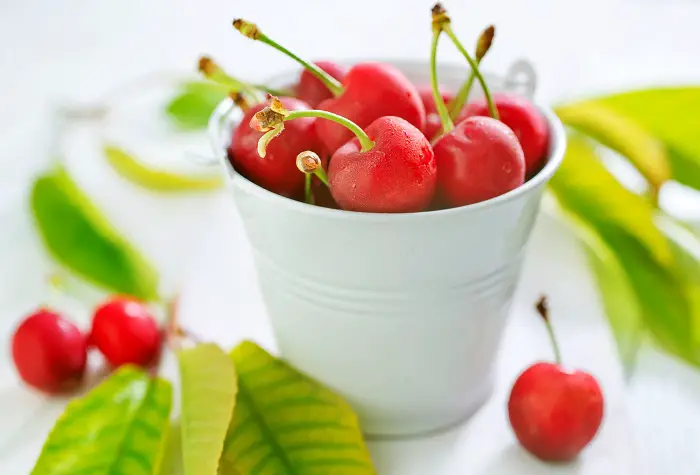
While the fruit itself might not be toxic to dogs, the stem, leaves, and seeds of this plant are quite toxic. they contain cyanide and become especially toxic when wilting. If consumed, the patient may present symptoms such as brick red mucous membranes, difficulty in breathing, dilated pupils, panting, and shock (source).
99. Coffee Tree
Also known as wild coffee, if any part of this tree is consumed, the patient may present symptoms such as vomiting, contact dermatitis, anorexia, and depression (source).
100. Corn Plant

This plant goes by many other names including Ribbon Plant, Dragon Tree, and Dracaena. It contains saponins and when consumed can cause vomiting (might be bloody in some cases), anorexia, depression, and hypersalivation (source).
101. Dahlia

Dahlia can be mildly toxic to dogs when consumed. Symptoms include mild gastrointestinal distress and mild dermatitis (source).
102. Daisies

Daisies contain quite a number of toxic principles including lactones, sesquiterpene, pyrethrins, and a few others. When ingested, these principles cause symptoms such as diarrhea, vomiting, incoordination, hypersalivation, and dermatitis (source).
103. Devils Ivy

Devils Ivy contains insoluble calcium oxalates and causes a range of symptoms when ingested. Symptoms include oral irritation, inflammation of the mouth, tongue, and lips, vomiting, excessive drooling, and difficulty in swallowing (source).
104. Eucalyptus

Eucalyptus contains essential oils which are toxic to dogs and other pets. If consumed, it can cause salivation, vomiting, diarrhea, depression, and weakness (source).
105. Lemon Grass
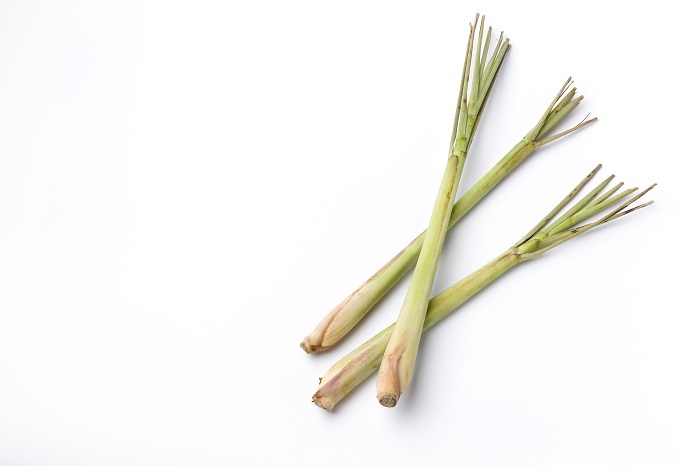
Lemon grass contains essential oils and cyanide which are only mildly toxic to dogs, fortunately. It hardly causes more than a stomach upset (source).
106. Flamingo Flower

The insoluble calcium oxalates in the Flamingo Flower cause symptoms such as oral irritation and inflammation, excessive drooling, difficulty in swallowing, and vomiting (source).
107. Grapefruit

The fruit itself is edible, however, the skin and other parts of the plants are considered toxic for dogs as they contain psolarens and essential oils. Symptoms of toxicity include diarrhea, vomiting, potential dermatitis, and depression (source).
108. Arrow-Head Vine
Arrow-head vine contains insoluble calcium oxalates and can cause oral irritation and inflammation when consumed. Other symptoms include excessive drooling, vomiting, and difficulty in swallowing (source).
109. Mint
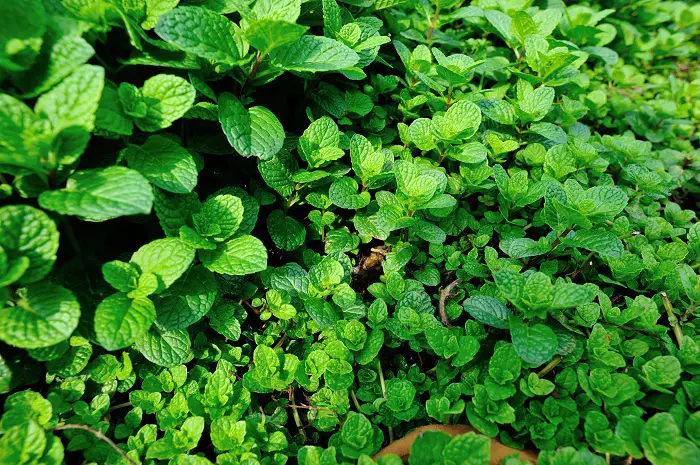
The essential oils contained in mint are moderately toxic to dogs, however, only when they are consumed in large amounts at a time. Symptoms include vomiting and diarrhea (source).
110. Barbados Pride
From tannins to GI irritants, Barbados Pride contains toxic principles that are mildly toxic to dogs, causing vomiting and diarrhea when ingested (source).
111. Black Cherry
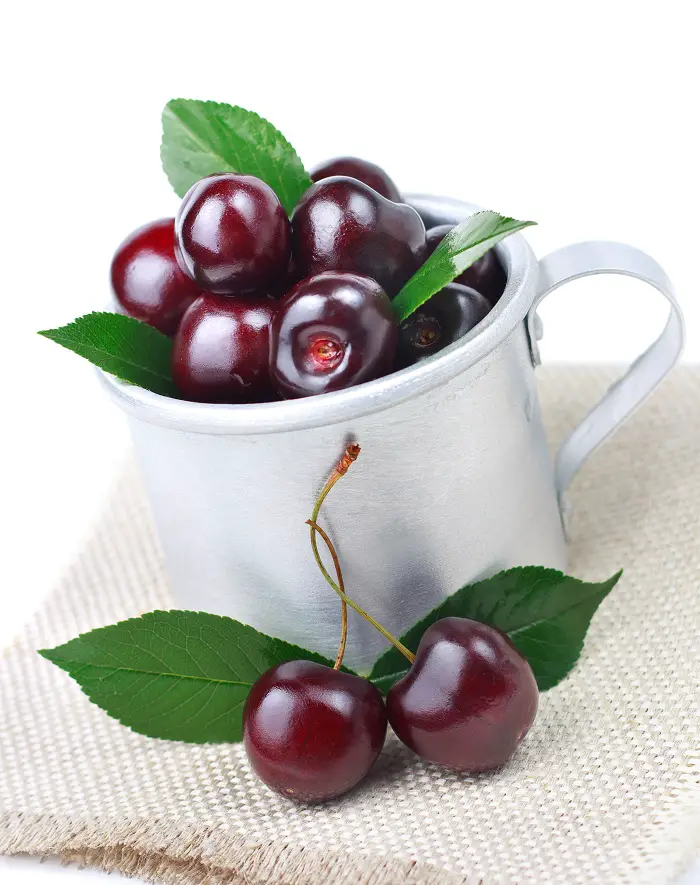
Just like cherries, black cherries are toxic especially their stems, leaves, and seeds. They present the same symptoms as the stems, leaves, and seeds of cherries when consumed (source).
112. Orange

The orange fruit is edible for dogs. However, skin and other parts of the plant can cause reactions when ingested. Possible reactions include diarrhea, vomiting, potential dermatitis, and depression (source).
113. Parsley
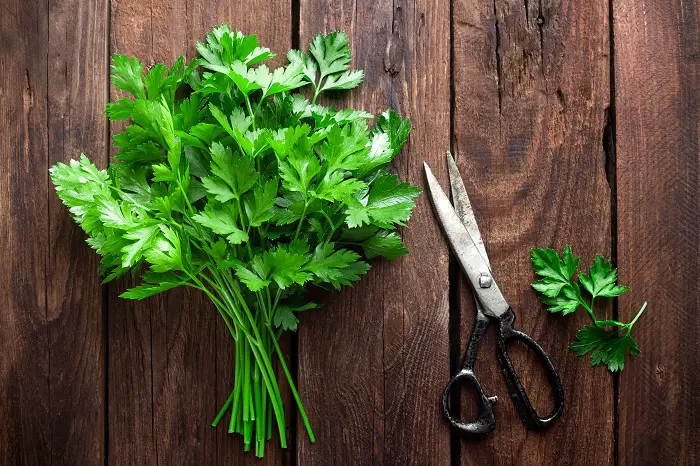
Containing furanocoumarins, parsley can cause photosensitization (including sunburn and dermatitis). Fortunately, the victim would have to consume large amounts of the plant to be able to cause damage (source).
114. Rhubarb

Rhubarb contains soluble calcium oxalates which cause tremors, salivation, and kidney failure when ingested (source).
Foods Dogs Can’t Eat — Human Medication
These all aren’t technically foods. But since they are ingested, we’ve decided to add them…
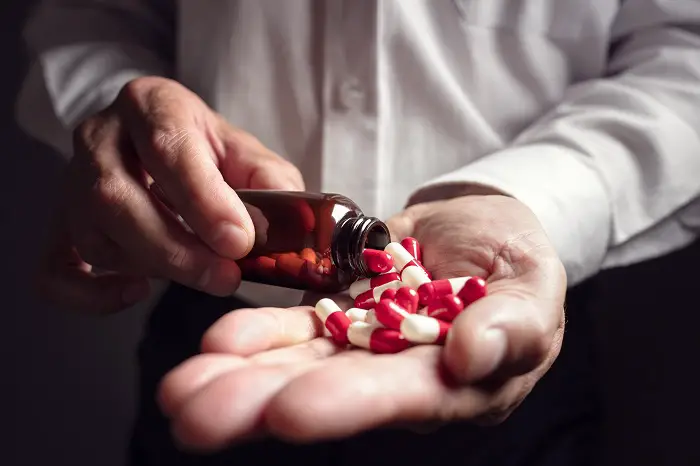
1. NSAIDs
NSAIDs stands for Non-Steroidal Anti-Inflammatories (NSAIDs). Some of the common household drugs in this group include ibuprofen such as Advil and certain types of Motrin. Another drug in this group also includes Naproxen (Aleve).
Generally, these drugs are safe for humans. However, even a single pill can cause your dog some serious harm. From stomach upsets to ulcerations of the intestine to kidney failure, a whole lot of damage can be done when dogs and other small pets ingest NSAIDs.
Examples of drugs in this group include Advil, Motrin, and Aleve (source).
2. Acetaminophen
An example of acetaminophen is Tylenol which is a common pain medication. Even for children, Tylenol is considered safe. For pets though, Tylenol just isn’t safe. In dogs, acetaminophen causes liver failure as well as damage to the red blood cells when consumed in a large enough quantity (source).
Examples of drugs in this group include Tylenol, Paracetamol, and Panadol (source).
3. Antidepressants

Sometimes, vets prescribe antidepressant for pets. But if taken at an overdose, antidepressants can cause some serious neurological conditions. Symptoms include sedation, loss of coordination, seizures, and tremors.
Besides that, antidepressants are also known to have quite the stimulant effect on the consumer. This often leads to a dangerous spike in the heart rate and blood pressure, as well as in the body temperature.
Examples of drugs in this group include Effexor, Prozac, Lexapro, and Cymbalta (source).
4. ADD / ADHD Medication
ADD stands for Attention Deficit Disorder while ADHD stands for Attention Deficit Hyperactivity Disorder. Medication typically used to treat these disorders contain highly potent stimulants such as methylphenidate and amphetamines (source).
Your dog only has to take a very small quantity of this medication to end up in a critical, life-threatening condition symptomized by seizures, tremors, increased body temperature, as well as cardiovascular problems.
Examples of drugs in this group include Concerta, Ritalin, and Adderall (source).
5. Benzodiazepines and Sleep Aids
Benzodiazepines are anxiety drugs and help to make people have better sleep. In pets, like dogs, though, these drugs do just the opposite.
When tested, it was observed that about one in every two dogs becomes even more agitated rather than sedated after taking these drugs.
Also, these drugs have been observed to bring about severe lethargy in dogs, loss of coordination, walking drunk, as well as slowed breathing.
Examples of drugs in this group include Xanax, Ambien, Klonopin, and Lunesta (source).
6. Birth Control Pills
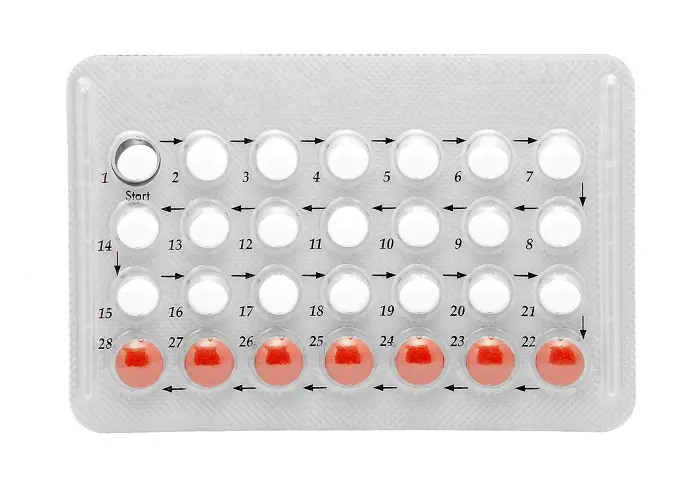
Fortunately, if consumed in small amounts, birth control pills don’t do too much damage. Problem is, they are typically very attractive to dogs and might be consumed in large quantities.
If consumed in large quantities, ingestion of estradiol and estrogen can cause a suppression of the bone marrow.
For the females, birth control is even more dangerous as it could lead to estrogen poisoning, especially in females that are not spayed.
Examples of drugs in this group include estrogen, progesterone, and estradiol (source).
7. ACE Inhibitors
ACE stands for Angiotensin-Converting Enzyme. So, ACE inhibitors are popularly used for treating high blood pressure in humans. But, sometimes, these drugs are also used for pets. So, generally, ACE inhibitors are safe for pets, as long as the ingestion of the drugs are monitored by an adult.
Generally, though, you want to keep heart medication far away from pets. Also, if the dog in question is suffering a heart or kidney failure, then they should stay away from ACE inhibitors.
Examples of drugs in this group include Altace and Zestril (source).
8. Beta-Blockers
Beta-blockers also treat high blood pressure just like ACE inhibitors. However, quit unlike ACE inhibitors, even a small quantity of these drugs, if ingested by dogs, can cause a serious level of poisoning in dogs.
If taken at an overdose, beta-blockers can decrease the blood pressure and reduce the heart rate drastically as well.
Examples of drugs in this group include Tenormin, Coreg, and Toprol (source).
9. Thyroid Hormones
Just like humans, dogs tend to get underactive thyroids as well. It’s interesting to note, however, that dogs need a much higher dose for treatment than humans. So, generally, when consumed in small amounts accidentally, dogs are safe.
But if dogs consume too much, it could cause nervousness, muscle tremors, painting, an increased heart rate, as well as aggression.
Examples of thyroid hormone drugs include Synthroid, and Armor Desiccated Thyroid (source).
10. Cholesterol-Lowering Agents
Popularly called statins, cholesterol-lowering agents are another group of drugs dogs should not take.
The good thing, though, is that a one-time consumption of these statins might not be enough to cause serious side effects – just mild diarrhea and vomiting. However, if consumption is continued, this might lead to more serious consequences.
Examples of drugs in the cholesterol-lowering agents group include Lipitor, Crestor, and Zocor (source).
11. Tramadol
This is a pain reliever that vets, sometimes, prescribe for dogs. However, you are never to administer this drug to your pet of your own volition without consulting your vet first, even though the drug is considered safe.
Too much tramadol has the ability to trigger agitation or sedation, disorientation, wobbliness, tremors, vomiting, and seizures (source).
12. Pseudoephedrine
This is a decongestant found in many drugs for cold and sinus infection. The drug has stimulant effects which can cause an increase in heart rate, blood pressure, and body temperature.
Symptoms of this are hyperactivity and nervousness. It could also cause seizures as well.
Pseudoephedrine is quite toxic to the extent that only a 30-milligram dose of the drug is enough to present some serious clinical symptoms. And with 3 doses of a 30-milligram drug, the effect could even prove fatalistic.
Drugs which contain pseudoephedrine include Sudafed, Entex, Comtrex, Dristan Cold, Tavist, Contac, Tylenol Cold, Theraflu, Sinarest, Triaminicin, Drixoral, Nyquil, and others (source).
13. Diabetes Medications
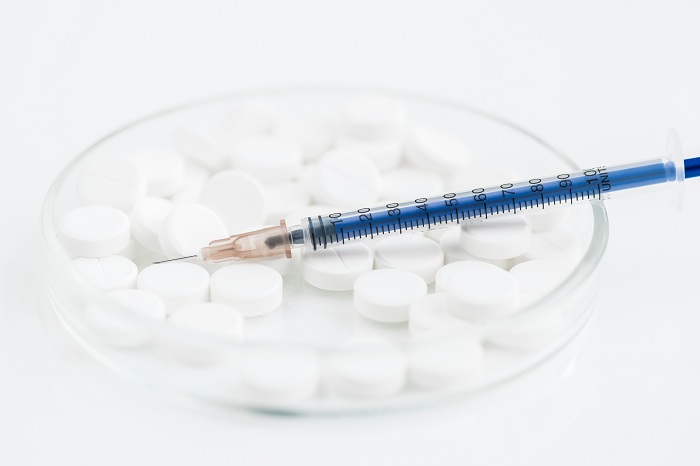
Diabetes medications contain glyburide and glipizide which you, definitely, don’t want your pet consuming. This is because, when ingested, the drugs could bring about a dangerous hypoglycemic effect in the victim. Other symptoms might also include disorientation, seizures, and loss of coordination.
Drugs which contain glyburide and glipizide are Glucotrol, DiaBeta, Micronase, Glynase, Glycron, Glucovance, etc (source).
14. Vitamin D Derivatives

Vitamin D derivatives are used to treat certain human conditions like osteoporosis, psoriasis, as well as thyroid problems. In fact, it could even lead to a spike in calcium levels in your dog which could end up fatal.
Signs of vitamin D poisoning in dogs include inappetence, excessive thirst, and urination due to renal damage.
Examples of vitamin D derivatives include calcipotriene (such as Dovonex), calcitriol (such as Calciex and Rocaltrol) (source).
15. Fluorouracil Topical
Fluorouracil topical is used in the treatment of actinic keratosis in dogs such as minor skin cancers, and basal cell carcinoma.
If ingested by dogs, fluorouracil topical can quickly turn lethal. Dogs present symptoms such as serious vomiting, cardiac arrest, and seizures when they consume this drug.
Examples of drugs containing topical fluorouracil are Efudex, Carac, Fluoroplex (source).
16. Isoniazid
This one is a brand name for the drug – Nydrazid which prevents and treats tuberculosis in human beings.
This drug is particularly toxic for dogs as they are unable to metabolize Nydrazid and can quickly lead to some grave, life-threatening seizures (source).
17. Baclofen
This muscle relaxant has the ability to damage your dog’s central nervous system. When ingested, certain symptoms develop which include vocalization, disorientation, seizures, as well as comas which can easily lead to death.
What brand names are baclofen? Co Baclofen, Kemstro, Lioresal, Liotec, and Nu-Baclo (source).
18. Cough Medicines
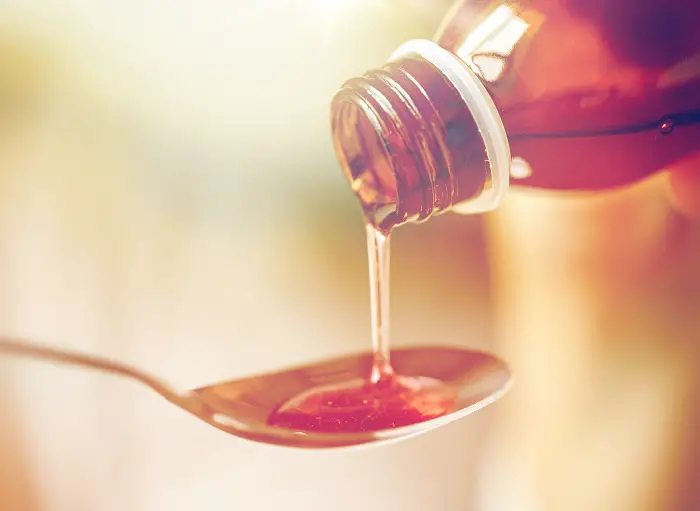
Found in nearly every household cabinet, cough medicines can also be safe for dogs. Vets even prescribe them for pets, sometimes. Nonetheless, they contain dextromethorphan which can bring about symptoms like vomiting, dizziness, nausea, and drowsiness.
Finally, avoid giving your dog any cough medicine that’s known to contain NSAIDs, Acetaminophen, caffeine, alcohol, and antihistamine (source).
19. Fat Loss Medication (Those that Include Caffeine)
Many of these fat medications are even dangerous for humans, worse still for dogs. They are high in caffeine and at toxic levels, fat loss can cause seizures, shivering, as well as heart failure (source).
20. Body Building Supplements
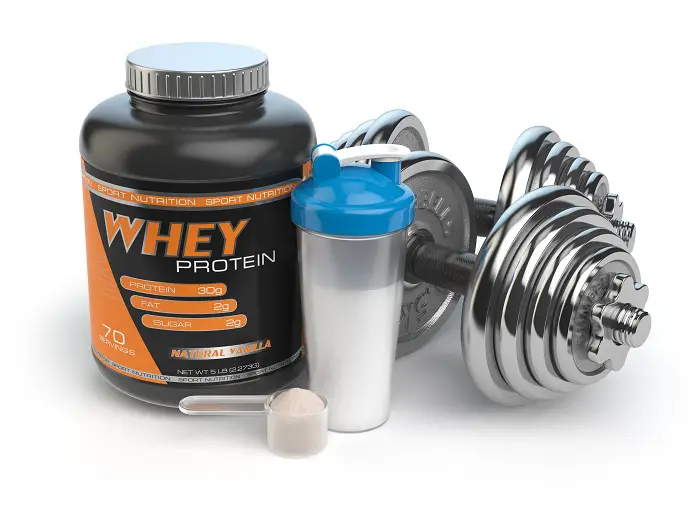
Bodybuilding should never be given to dogs in a bid to make them stronger. Because they are high in micronutrients, these supplements easily prove lethal to dogs once they are consumed in high amounts.
These supplements are indigestible by dogs and, as such, these supplements cause serious gastrointestinal upset as well as bloody diarrhea (source).
21. Antihistamines
Antihistamines can be administered to dogs as long as it is within the right dose. While an overdose might only cause drowsiness in humans, in dogs, it could cause symptoms such as drooling, vomiting, convulsions, wobbliness, and even a coma (source).
22. Opiate Painkillers
These super-strong painkillers might contain codeine which, although can be administered to pets, has to be meticulously done. Some medicines in this group include fentanyl, tramadol, methadone, and oxycodone.
An overdose of opiate painkillers can lead to vomiting, drowsiness, wobbliness, breathing difficulty and then death as a result of suffocation, as well as a coma. Dogs, particularly, suffer from this poisoning than other pets (source).
23. Alpha Lipoic Acid
This medication is used in the management of diabetes in dogs. In small doses, this drug isn’t very toxic. However, in large doses, alpha lipoic acid can be toxic to dogs (source).
24. Aspirin
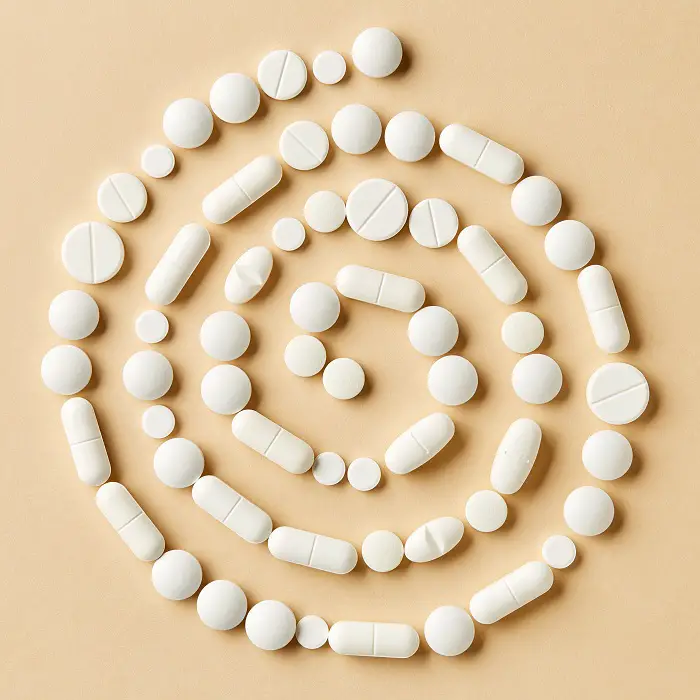
Aspirin works as an anti-inflammatory, antipyretic analgesic for humans. However, it is mild enough that it is also, sometimes, recommend by vets for pets. Nonetheless, you’d still want to be careful as the drug could prove toxic to your dog if they accidentally swallow a huge dose of the drug (source).
25. 5-Hydroxytryptophan
This is found in human dietary supplements and is considered toxic to dogs (source).
26. Imidazolines
Imidazolines are decongestant compounds and they are found in nasal and eye preparations. They are quite toxic to pets – dogs inclusive, and hence, aren’t used for veterinary purposes.
Examples of these drugs include tetrahydrozoline, oxymetazoline, tolazoline, naphazoline (source).
27. Phenazopryridine
This is commonly used in humans as a urinary analgesic. It is quite toxic for dogs (source).
28. Propylene Glycol
As people get more environment-conscious, more companies are getting more responsible. For instance, in hair dyes, antifreeze, paints and disinfectants or varnish, propyl glycol are now more common. Sadly, propylene glycol is considered rather toxic to dogs (source).
29. Tea Tree Oil (Melaleuca Oil)
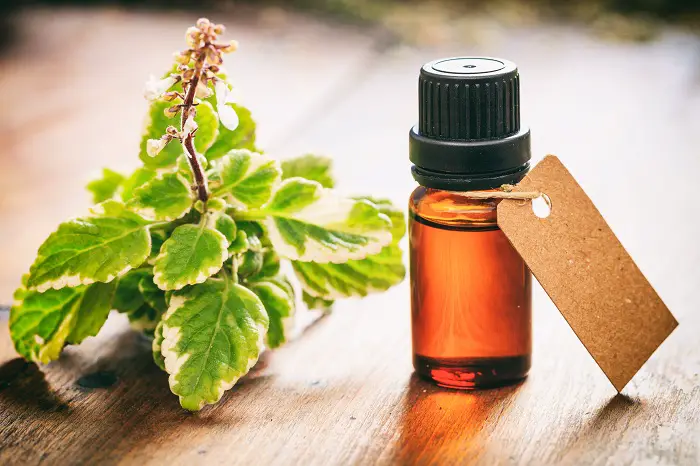
This is an antibacterial preparation mostly used as a topical treatment for bacterial infections in humans. However, they present major toxicity risks for pets. The chances of poisoning are actually higher in cats but that’s not to say that dogs are not at risk too. Best for them to steer clear of tea tree oil (source).
Sundry Things/Foods Dogs Can’t Eat
1. Blood Meal
Blood meal comes with nitrogen and this can cause vomiting, diarrhea and even a severe case of pancreatitis. Also, some of them come with added iron and consuming that would be toxic for your dog (source).
2. Bone Meal
These are made from the crushing of animal bones into fine powder. Usually, this powder is really attractive to dogs. However, if your pup consumes a large quantity of the bone meal, it could harden and form a blockage in the intestine which has to be taken out by surgery (source).
3. Ant Baits
Ant baits tend to have a sweet smell and taste in order to attract the ants. But, apparently, this works too well and attracts dogs as well.
Sadly, ant baits contain boric acid which is quite toxic to dogs especially when consumed in large amounts at a time (source).
Things/Foods Dogs Can’t Eat — Household Products
While most of these aren’t foods by any standard, we’ve added them because of their tendency to be accidentally consumed by dogs. If you have these around your house be extra careful with them so your dog does not have access to them. Remember that dogs are scavengers and like to try out new stuff.
1. Narcotics

Narcotics go beyond being toxic to dogs to being life-threatening. If you suspect that your dog has taken in narcotics like marijuana for instance, you want to call your vet immediately. A prompt call might be the difference between whether your dog lives or not (source).
2. Cocoa Bean Mulch
Just like chocolate, cocoa bean mulch contains caffeine and theobromine which we’ve already seen to be toxic to dogs.
If swallowed by dogs, symptoms might include a faster heart rate, diarrhea, vomiting, seizures, and tremors.
The problem now is that no one exactly knows just how much cocoa bean mulch is needed to cause poisoning in dogs. Thankfully though, death is not common with cocoa bean mulch. That’s not to say there are no reported cases, though. There have been a few (source).
3. Compost Piles
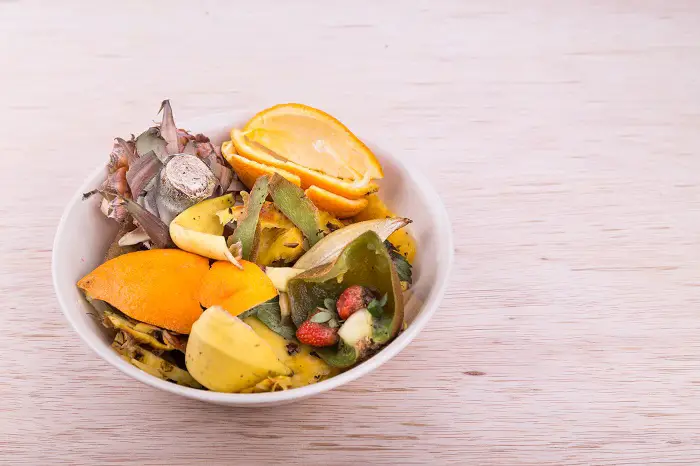
A pile of decaying organic matter is, easily, a disaster waiting to happen for dogs and pets around. These piles contain tremorgen mycotoxins. So, these molds have the ability to cause tremors if ingested.
In fact, it only takes a small amount to cause serious symptoms such as tremors and seizures within just half an hour to few hours after ingestion (source).
4. Playdough
Playdough is mildly to moderately toxic to dogs. It contains ingredients such as food coloring, flour, oil, and, mostly, large amounts of salt. Dogs who consume playdough might end up developing salt toxicity. Same with salt dough ornaments which has landed some dogs into fatalities in many cases.
Now, playdough is quite expensive, ranging from moderately poisonous, to severe, to life-threatening.
Signs of toxicity to watch out for include vomiting, diarrhea, inappetence, lethargy, loss of coordination, increased urination and thirst, tremors, seizures, and coma (source).
6. Cat Food
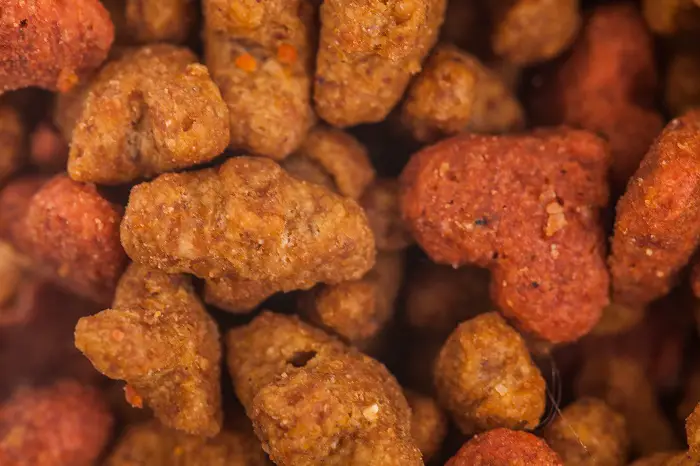
Cat food is quite a tricky one when it comes to foods that dogs can’t eat. On the one hand, if hard-pressed, dogs can manage to survive on at food. However, there’s a high risk that comes with a dog eating cat food.
First, the imbalance in nutrients could lead to obesity, gastrointestinal irritation, and pancreatitis.
Also, even if your dog doesn’t seem to be displaying any immediate, serious adverse effect after eating the cat’s food, because cat food is so high in protein, the food might give your dog’s kidneys and liver a tough time.
Now, if your dog does steal some of the cat’s food, there’s no reason to panic just yet. Dogs do that all the time, and in most cases, the worst side effects of that are vomiting and diarrhea. This is dependent on the dog, though.
In all, if your dog seems to be exhibiting some symptoms of gastrointestinal upset, then you might want to call your vet (source).
What To Do When Dogs Eat Something That’s Toxic For Them
The first thing you must do when you notice that your dog has swallowed something poisonous is to watch out for the following clinical signs:
Clinical Signs To Watch Out For When Your Dog Eats Something He Shouldn’t
- Generalized lethargy.
- Malaise.
- Weakness.
- Vomiting.
- Diarrhea.
- Nausea
Other graver signs and symptoms to look out for are:
- Agitation.
- Excessive sedation.
- Tremors.
- Twitching.
- Seizures.
- Coma (source).
Immediate Care For Dogs Who Eat Something They Shouldn’t

Generally, the aim of treatment when it comes to poisoning in animals is to neutralize whatever toxin has been ingested so it doesn’t spread. Supportive measures might also be necessary for the victim as well (source).
General Steps For Treating Poisoning in Dogs.
1. Take your pet to a safe spot away from the poison source. While you’re at it, be sure that it is safe, first. For instance, there are some poisons that would require you to use special equipment to handle them (source).
2. Next, try to identify the poison if you can. You should also get the content into a bag ready for your vet’s evaluation. Get that alongside the label, containers, or any other wrapping at all. This will prove quite useful to your vet as well (source).
3. If your dog threw up, you want to take a small sample of the vomit in a plastic bag with you to the vet. Yeah, we know. It’s disgusting. However, your vet would need it to run some tests and analyses (source).
4. Please do not try to induce vomiting on your own without the help of your vet, especially if your pet is unconscious. A strong reason is because there are some poisons whose effects are made worse when you induce vomiting. Your vet knows these poisons which is why they are the best people to make that call (source).
5. On your way to the vet’s, you might want to call the Pet Poison Helpline. This might help in relaying relevant and critical information to your vet (source).
If The Ingested Item Is A Household Product, Here’s What To Do
1. Do not panic.
2. Call your vet.
3. Take your dog away from the source of the poison.
4. If he isn’t breathing, initiate CPR immediately (source).
5. If he is convulsing or there are tremors, take your dog to a safe place away from the furniture or stairs. This will keep him from hurting himself in such situations (source).
6. Get to the vet as fast as you can. They might need to pump your dog’s stomach or give activated charcoal in order to bind toxins that might be present in the stomach (source).
If Ingested Item Is An Acid, Alkali Or A Petroleum Product, Here’s What To Do
1. If the offending agent ingested is caustic, do not try to neutralize with home remedies. Oftentimes, this backfires as neutralization is a chemical reaction in itself which can aggravate the situation (source).
2. Flush the mouth with tepid water, instead, for about 15 minutes. You can either use a kitchen sink spray hose or a showerhead. Just remember not to direct either to the back of the throat as water could get to the lungs and cause complications. Just rinse the different angles of the mouth instead (source).
3. Never induce vomiting on your own. It could make things worse (source).
4. Keep in mind that burns take time to show up – up to hours, sometimes. Please do not assume there are no burns because they haven’t shown up yet. Even in the stomach and esophagus, burns can show up. Beware (source)!
5. Call the vet if your dog is unconscious.
6. If the product ingested is a petroleum product, please avoid inducing vomiting. Petroleum products aspirate easily which could put your dog in a worse situation such as severe aspiration pneumonia (source).
7. For burns and scalds, say your dog licked a chemical substance, first lie your dog on their side. Then begin to pour cool water into his mouth, one cup at a time. You can also use your garden hose too. When you’ve completely flushed with water, bind up the superficial burns using a non-stick bandage and then call your vet (source).
Other Important Points
1. If your vet gives you the go-ahead to induce vomiting, make sure you only use fresh, bubbly hydrogen peroxide as instructed by them. Also, ensure that the hydrogen peroxide is not expired (source)!
Also, please note that salt, syrup of ipecac, as well as other home remedies only make your pets worse. This is the reason they are no longer recommended, and as such, you shouldn’t use them (source).
2. The activated charcoal you have at home and the one at the vet’s aren’t the same. Please do not administer the one you have at home to your pet (source).
3. If you’re finding it difficult to reach your vet or an emergency clinic, call the pet poison helpline instead. You can reach them on 1-855-213-6680 (source).
Keeping Your Dog Away From Foods They Can’t Eat

1. Crate training is very important. In fact, it’s the best way to avoid cases of accidental toxicity.
2. Make sure your house is pet proofed. All dangerous items and substances must be out of the reach of your pup.
3. Your dog must not be allowed to play in areas where chemicals abound.
4. In your garage, ensure that even minor spills are cleaned up immediately. For instance, with antifreeze especially, this substance tastes good which naturally entices dogs. Lapping up remnants of that on the garage floor could lead to trouble as we’ve already seen.
5. Your medication and that of your pet should never mix. You don’t want to administer your own meds to him by accident.
6. Also, always read the prescription before administering any drug to your pet. You always want to ensure that you’re giving the right dose per time.
7. Those that use those colorful plastics as their weekly pill holder should be careful to ensure that they are kept in an elevated position. You don’t want your dog seeing them as chew toys. They could chew through them and eventually chow down on the pills in them.
8. Never store pills in Ziploc or other plastic storage bags. Dogs can, easily, chew through them (source).
9. Do not leave your dog unsupervised around waste bins. Also, always ensure that these waste bins are dog-proof. Remember that if your dog grew up on human food, he is more likely to raid the trash and so are bored dogs. So, keep your dog exercised and feed him rightly (source).
10. Don’t forget to clean out your refrigerator. You don’t want your fridge rife with old, toxin-packed food waiting for your dog to ingest (source).
11. Avoid feeding your dog raw or undercooked food, from raw fish to undercooked eggs or meat. Don’t let them close to them either, probably while cooking them. These foods might carry Salmonella which could cause gastrointestinal upset in dogs (source).
Foods Dogs Can’t Eat — Conclusion
We have seen how eating the wrong things can prove even fatalistic for your dog. It is, therefore, crucial that you monitor everything your dog ingests closely. As we say, prevention is better than cure.
But, of course, every now and then, a snafu happens and your dog accidentally ingests something bad for them. That doesn’t make you a bad parent.
Simply compose yourself, call your vet, as well as the pet poison helpline on 1-855-213-6680. You can also do these while following the immediate care steps we listed above. We’re sure your dog will be okay in no time.
